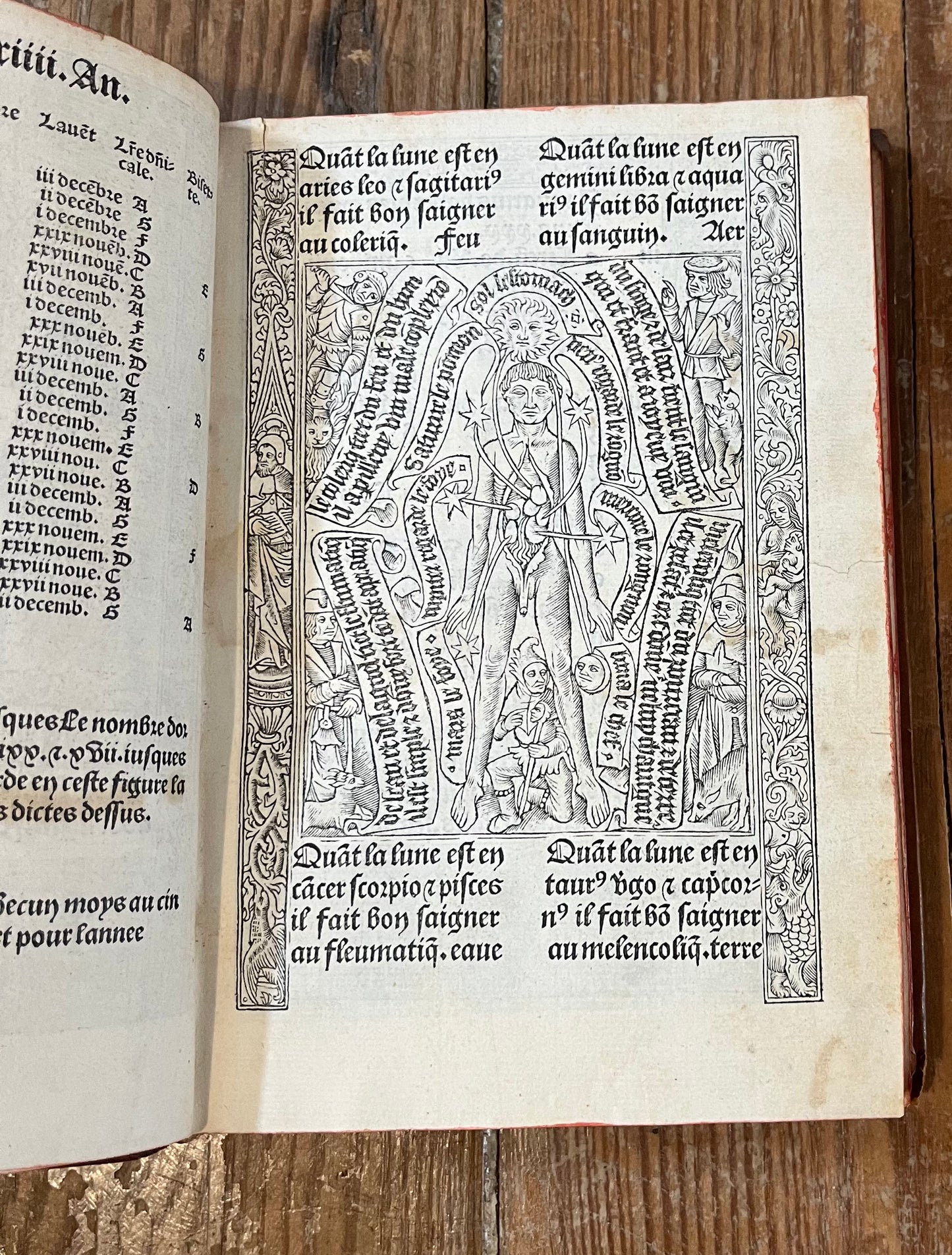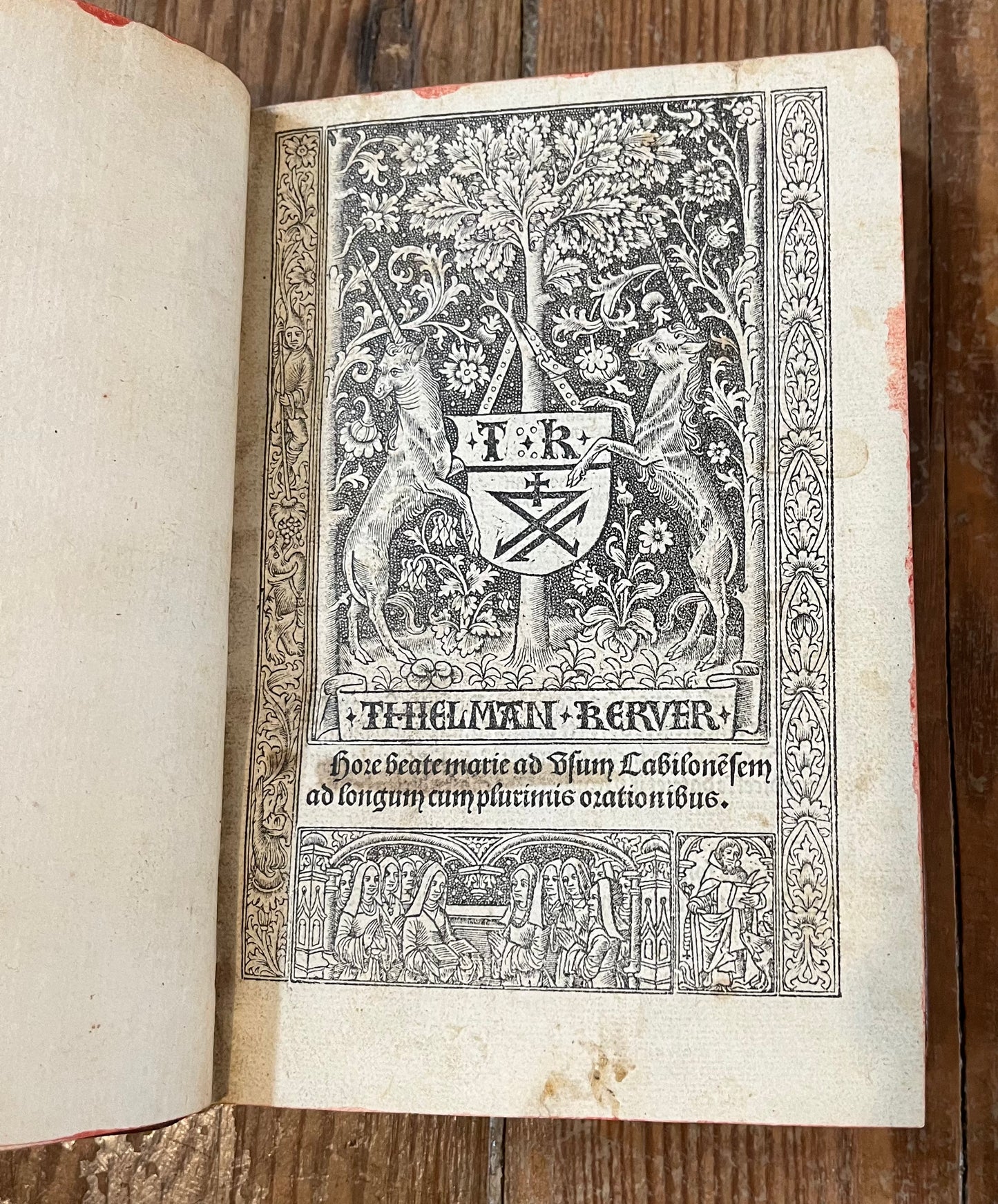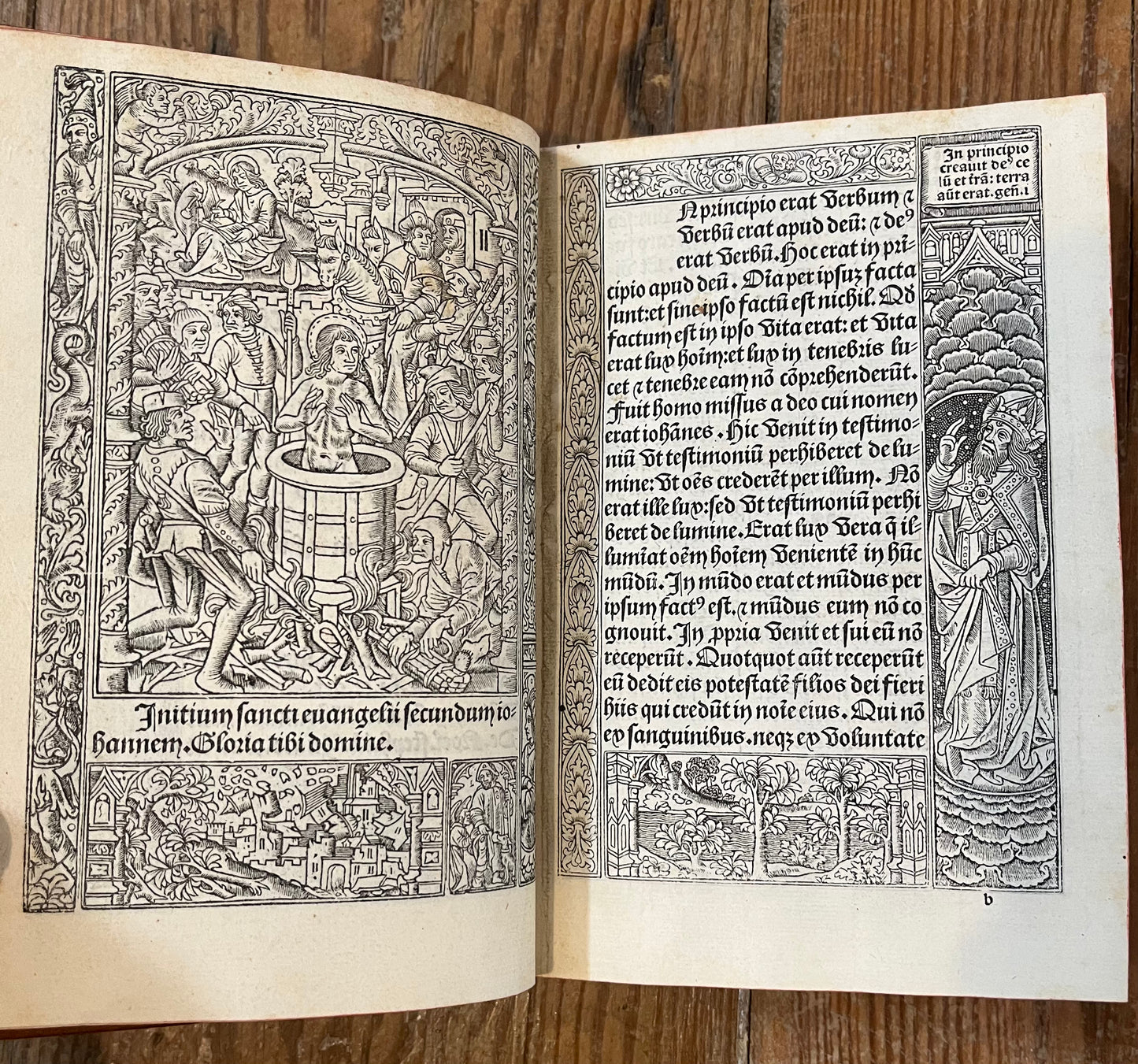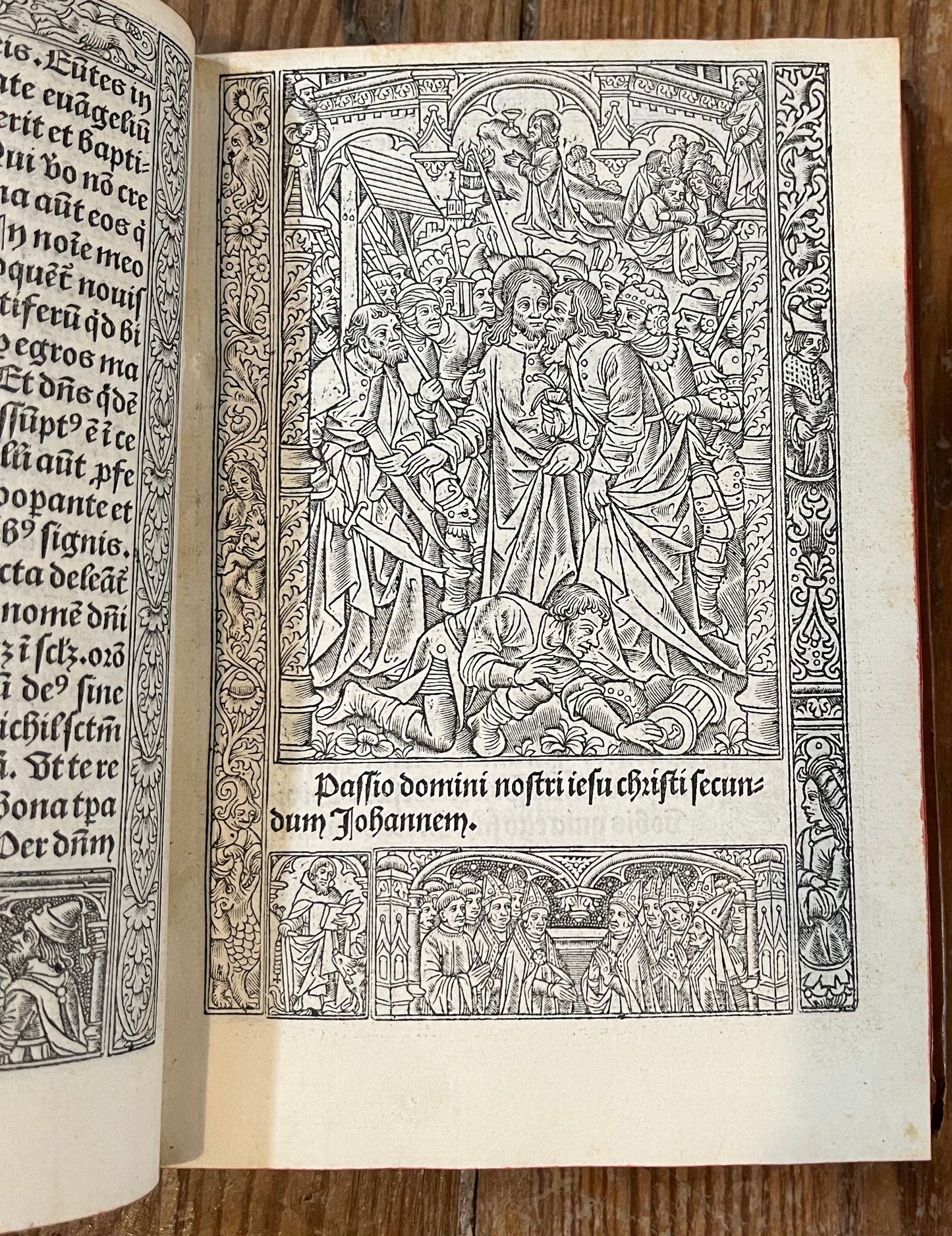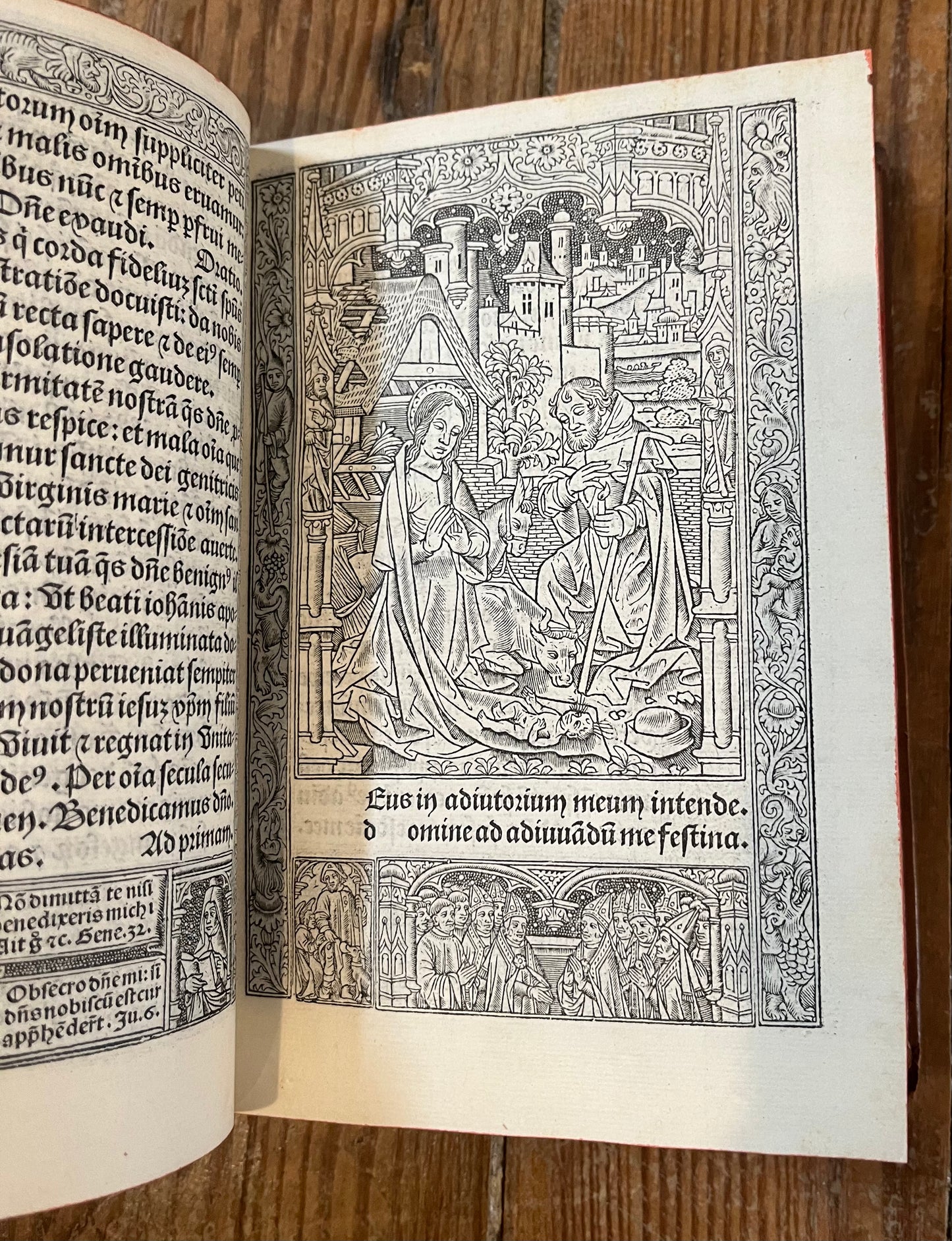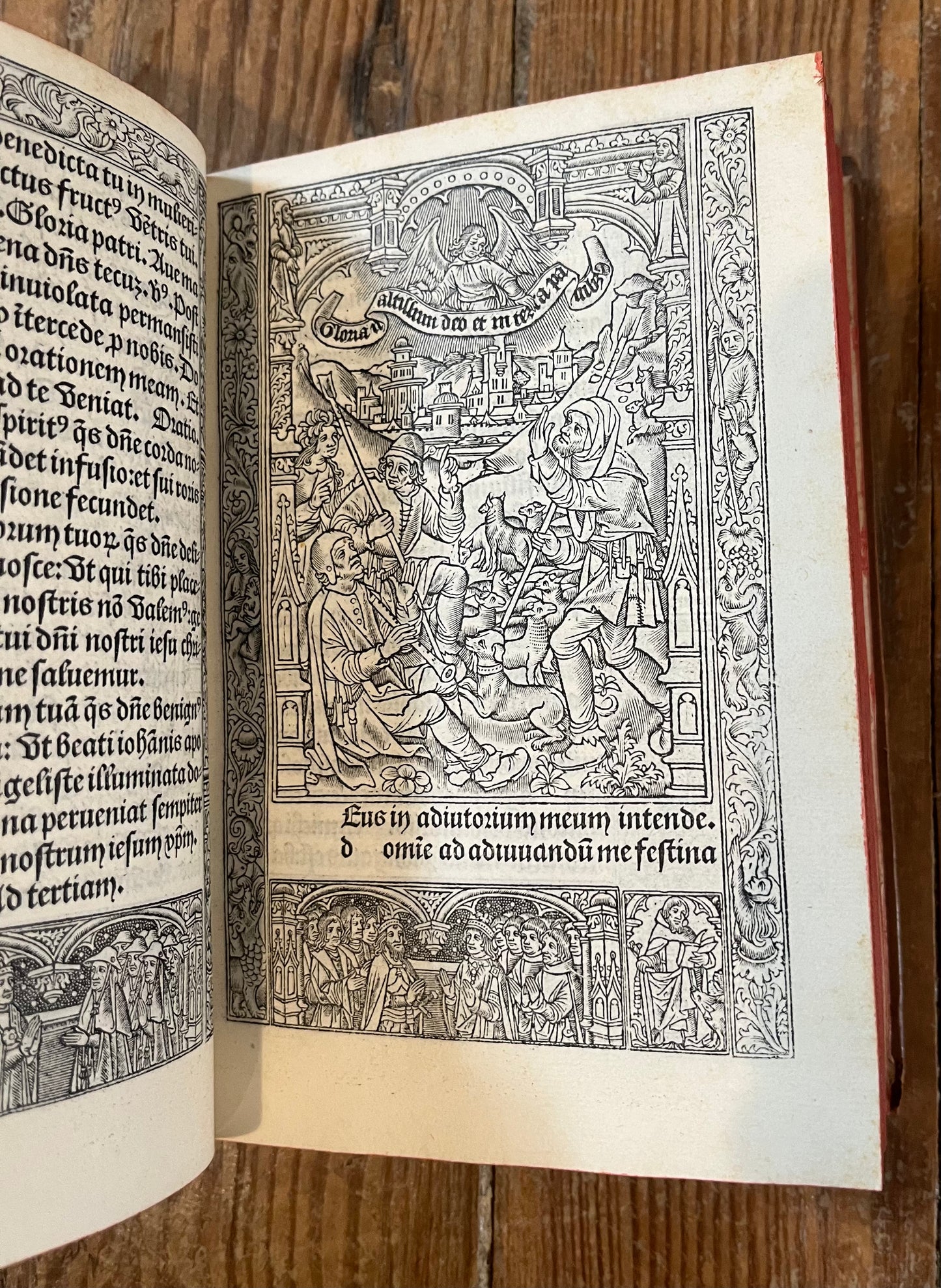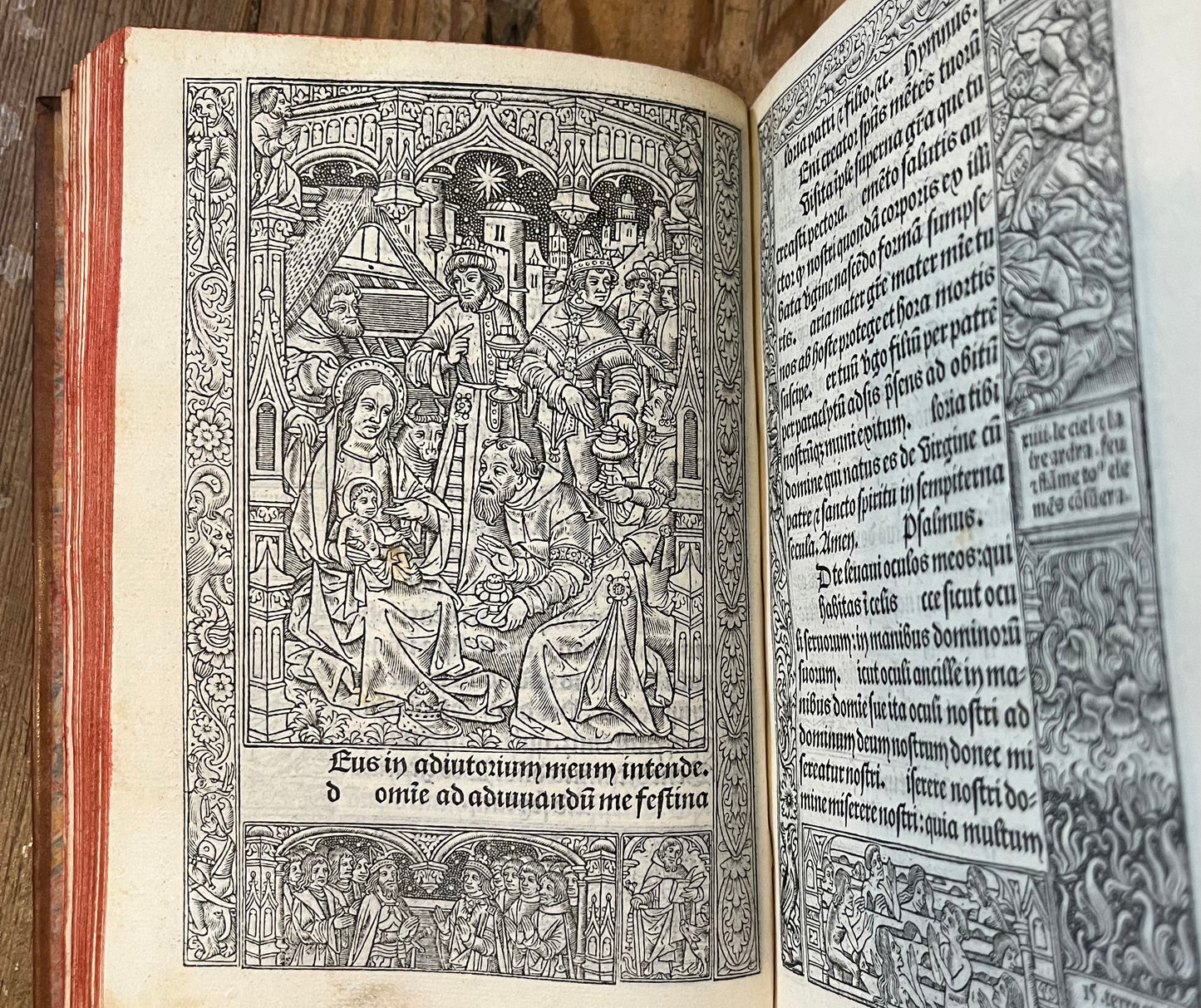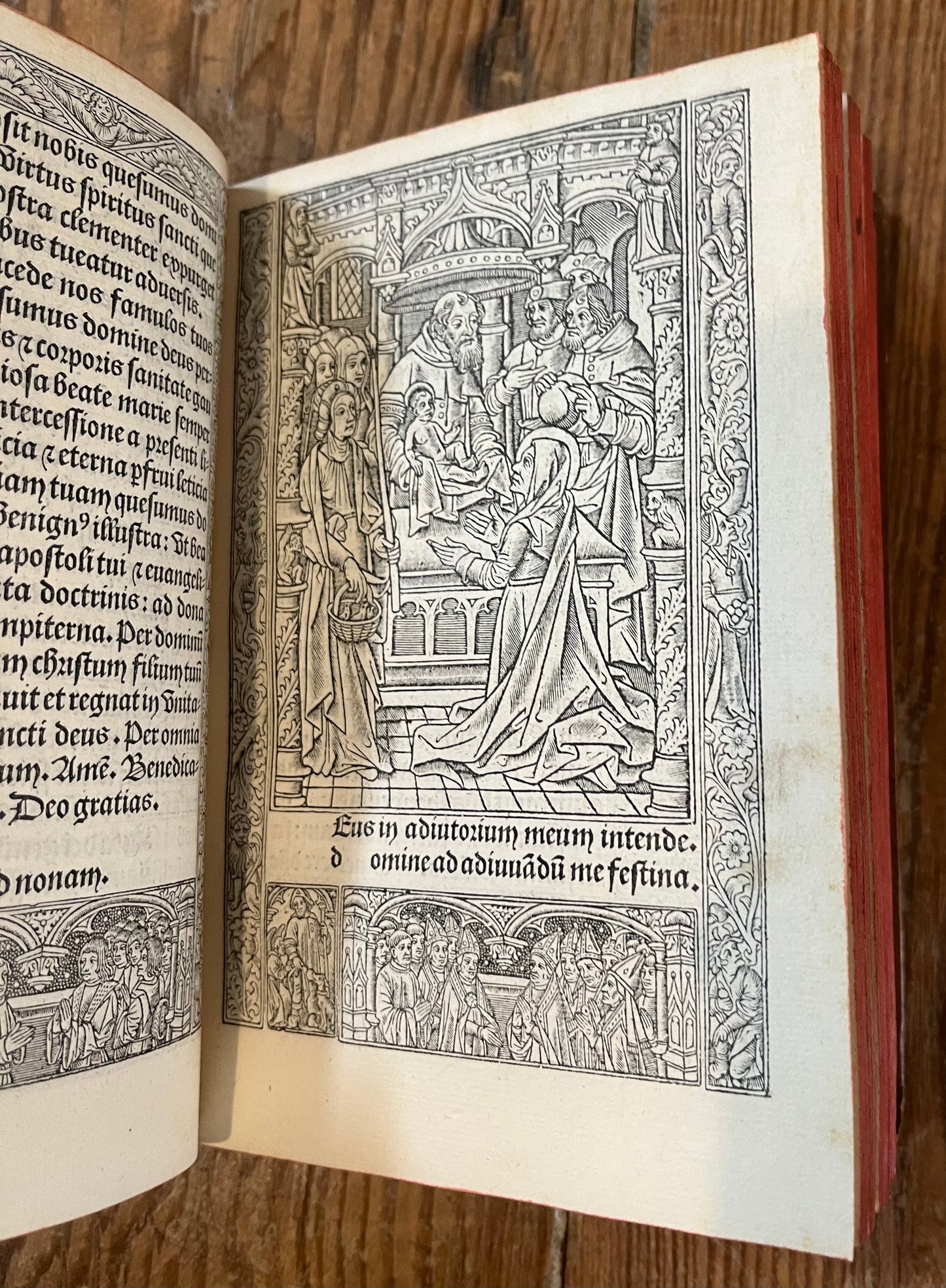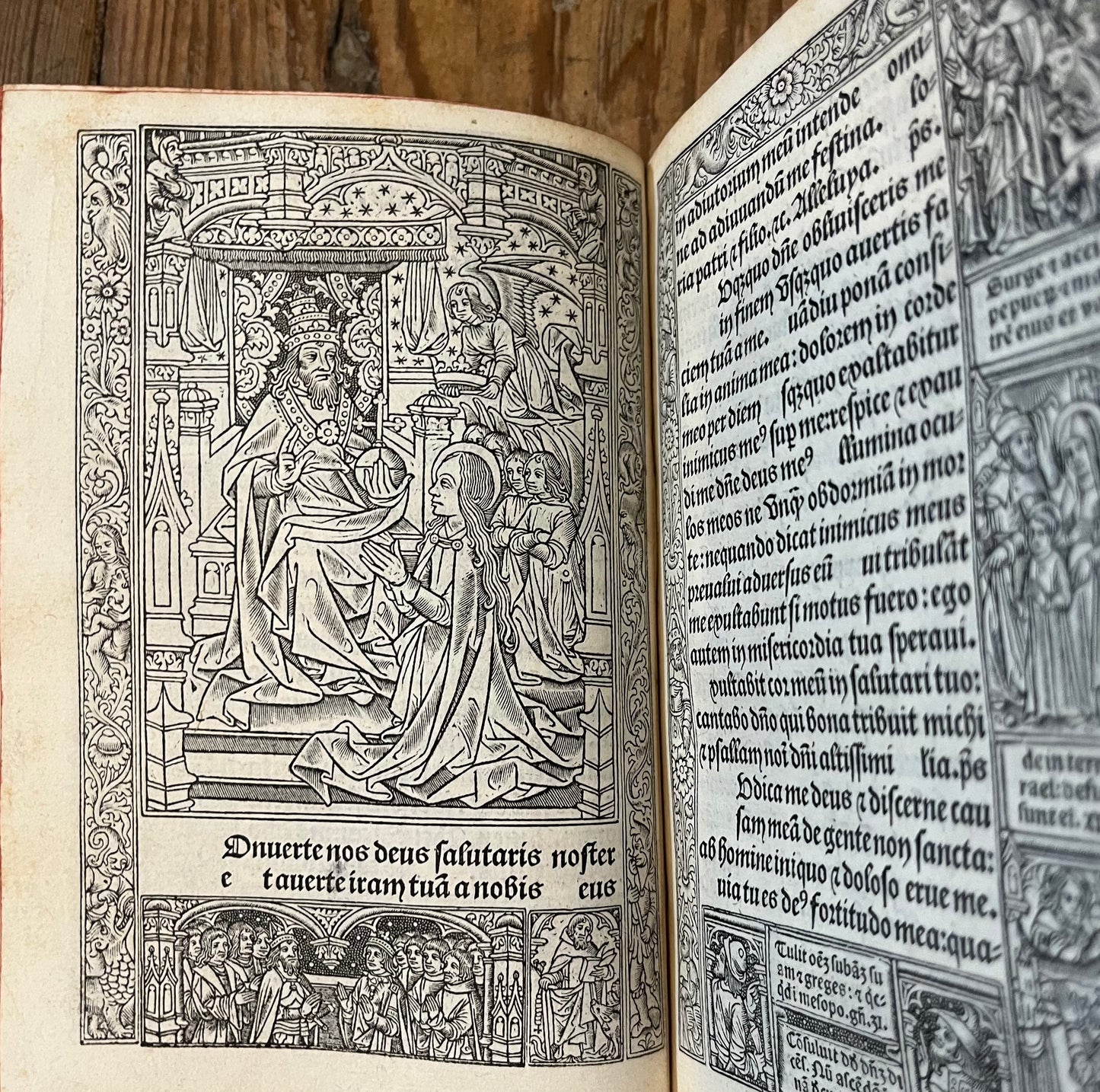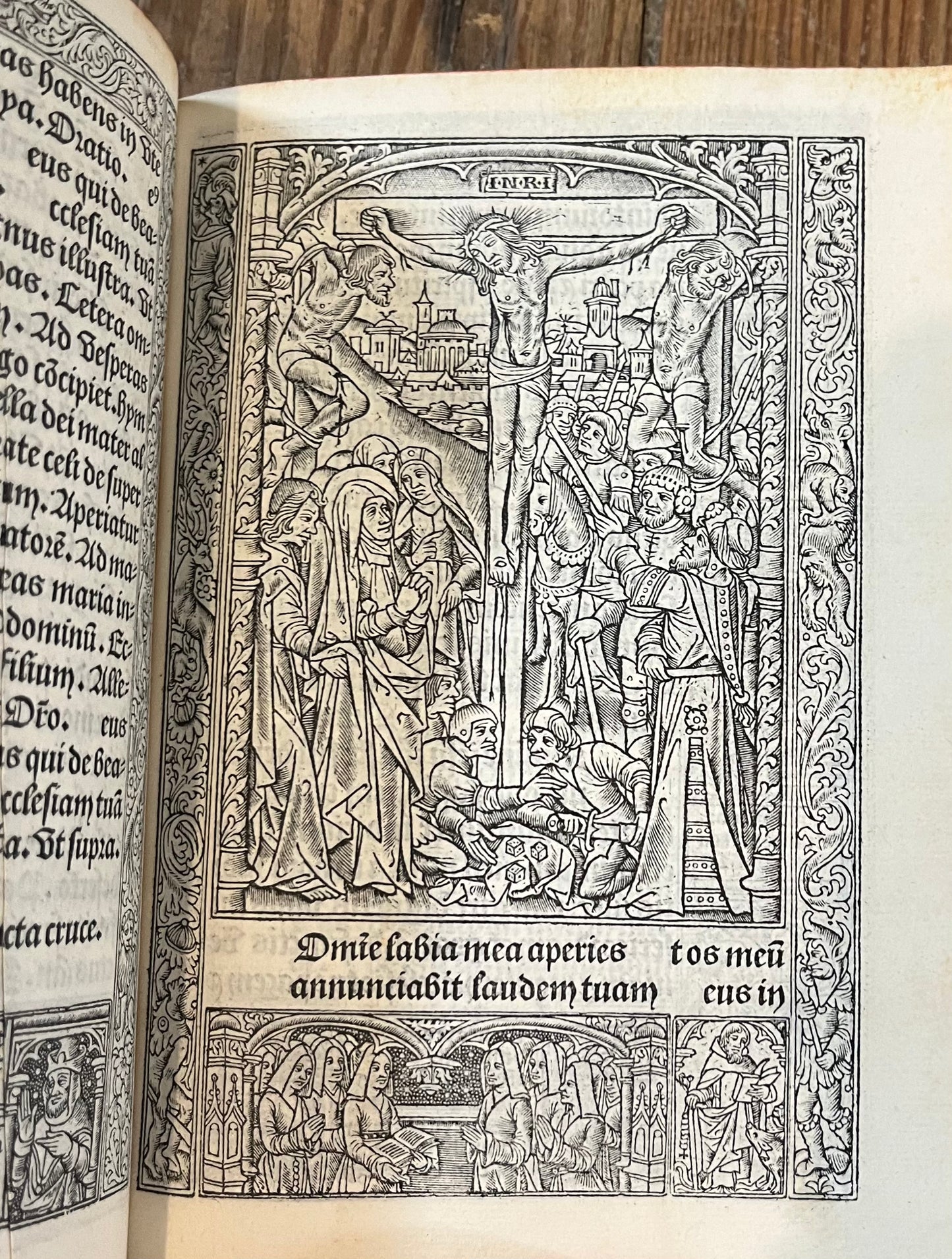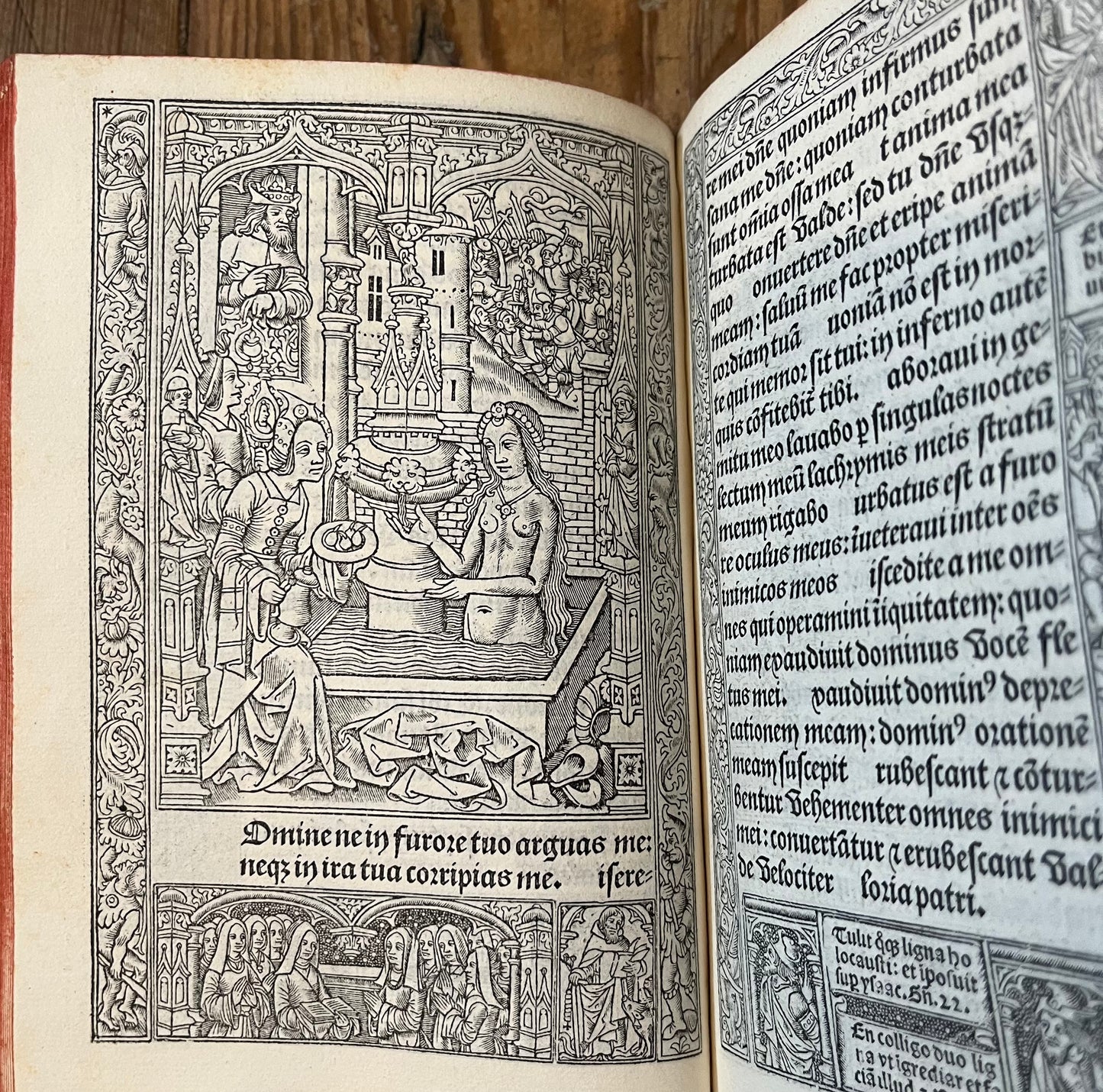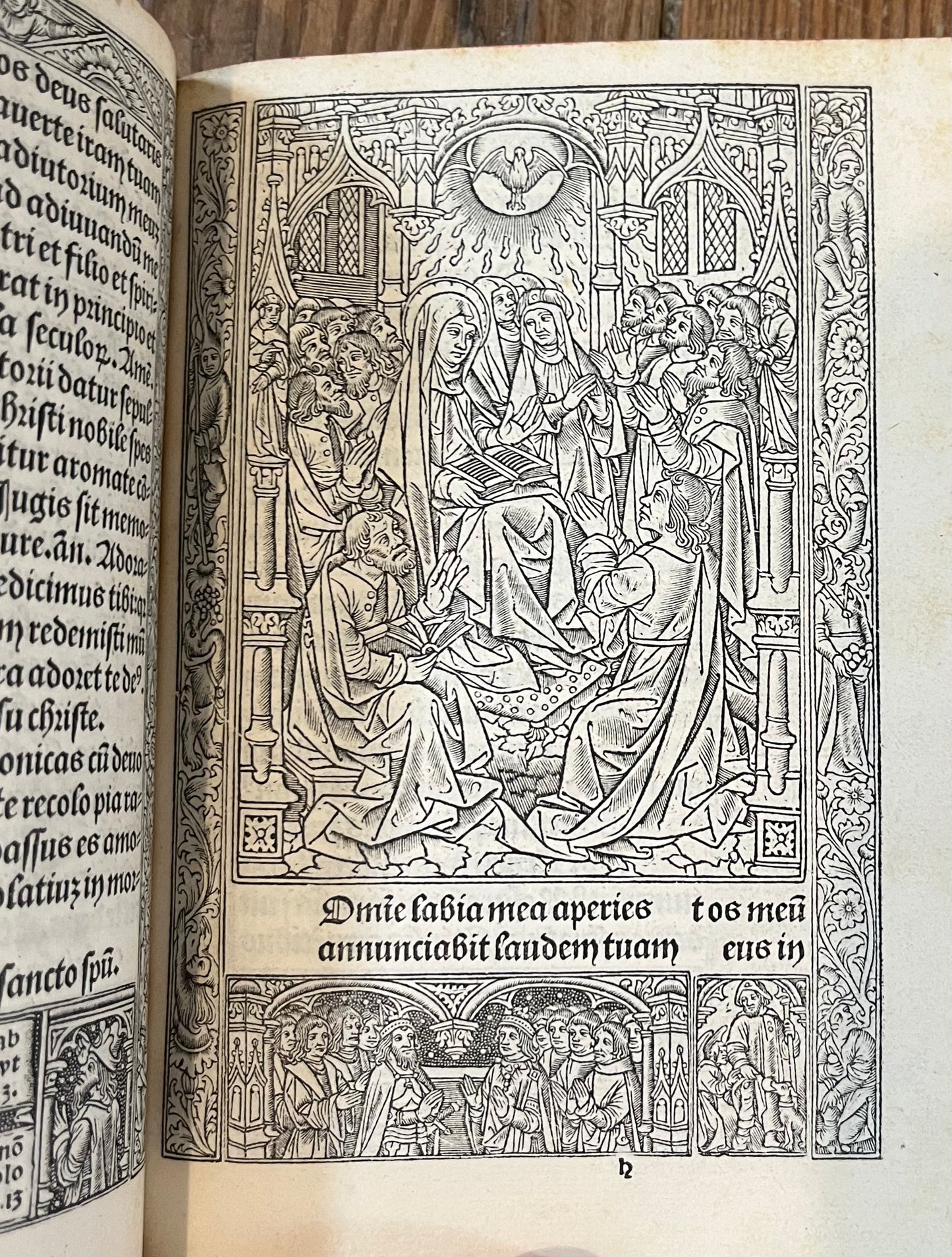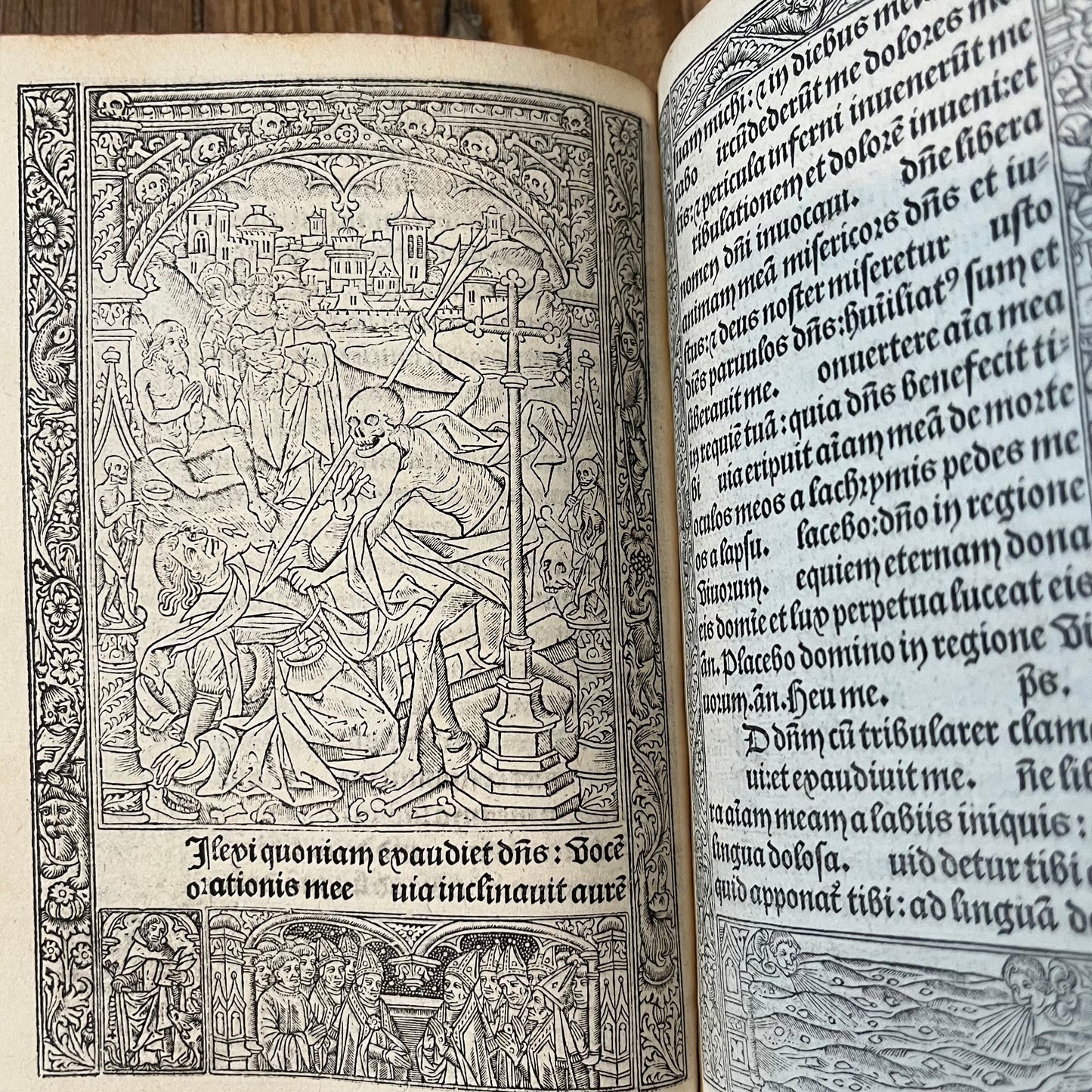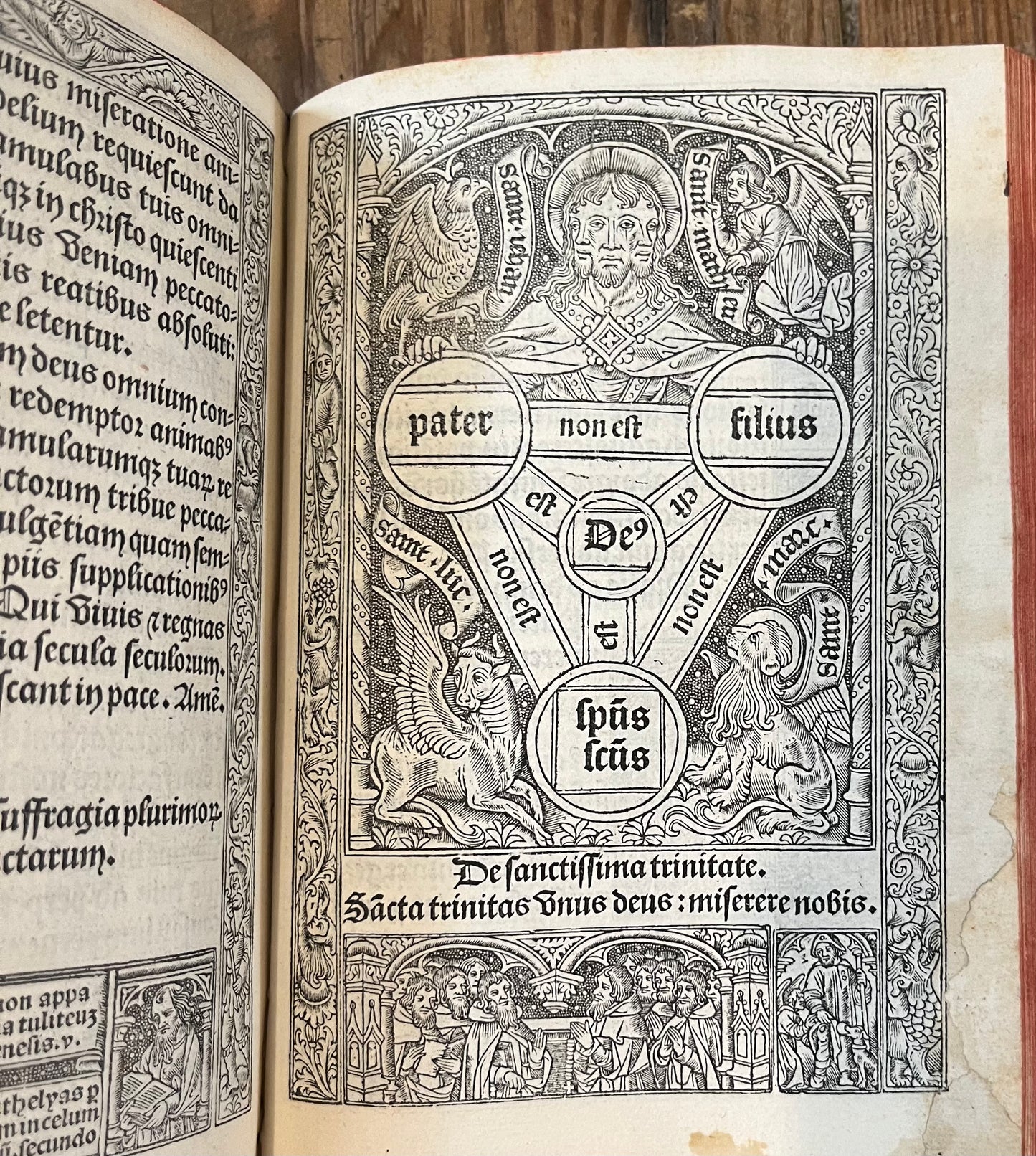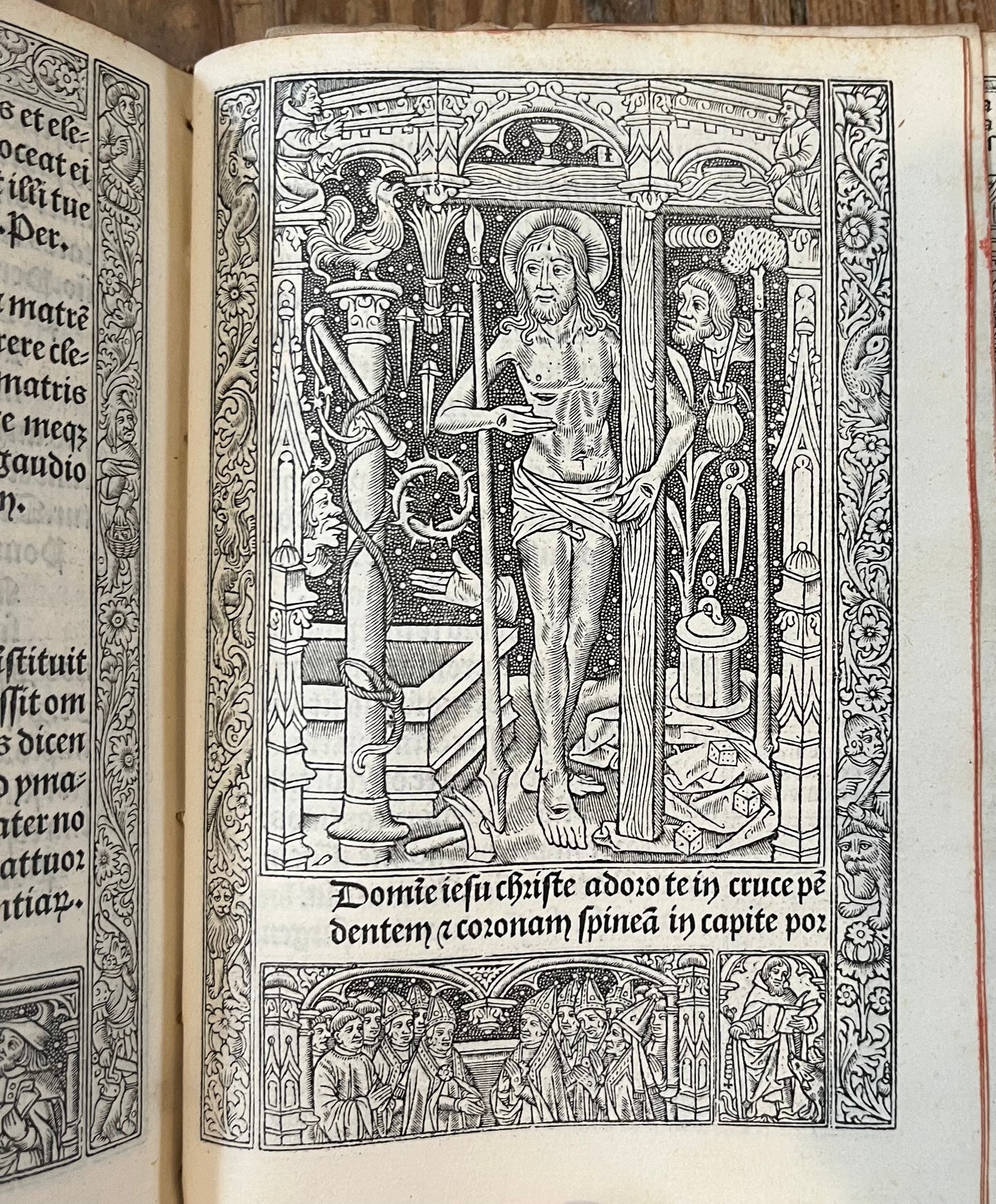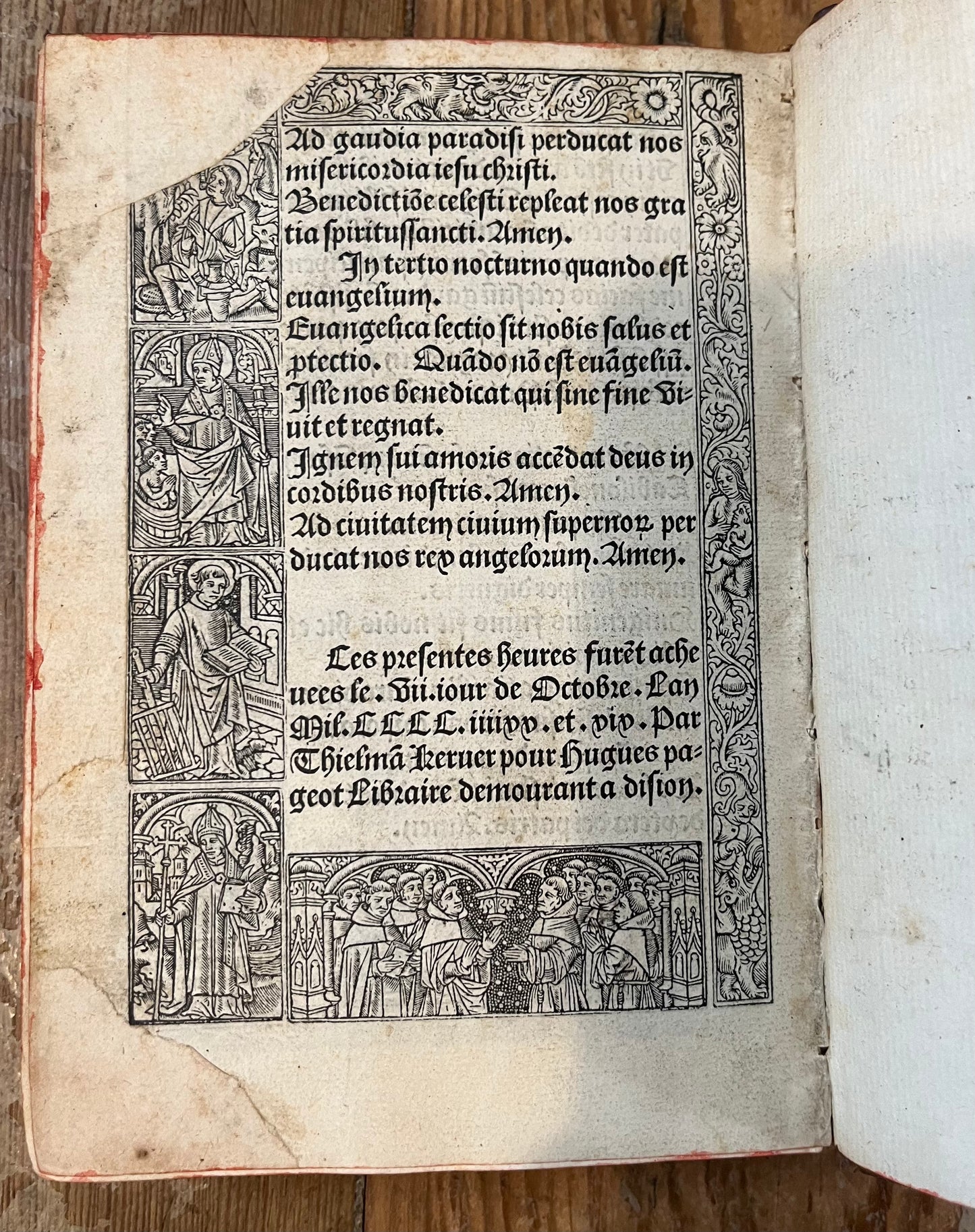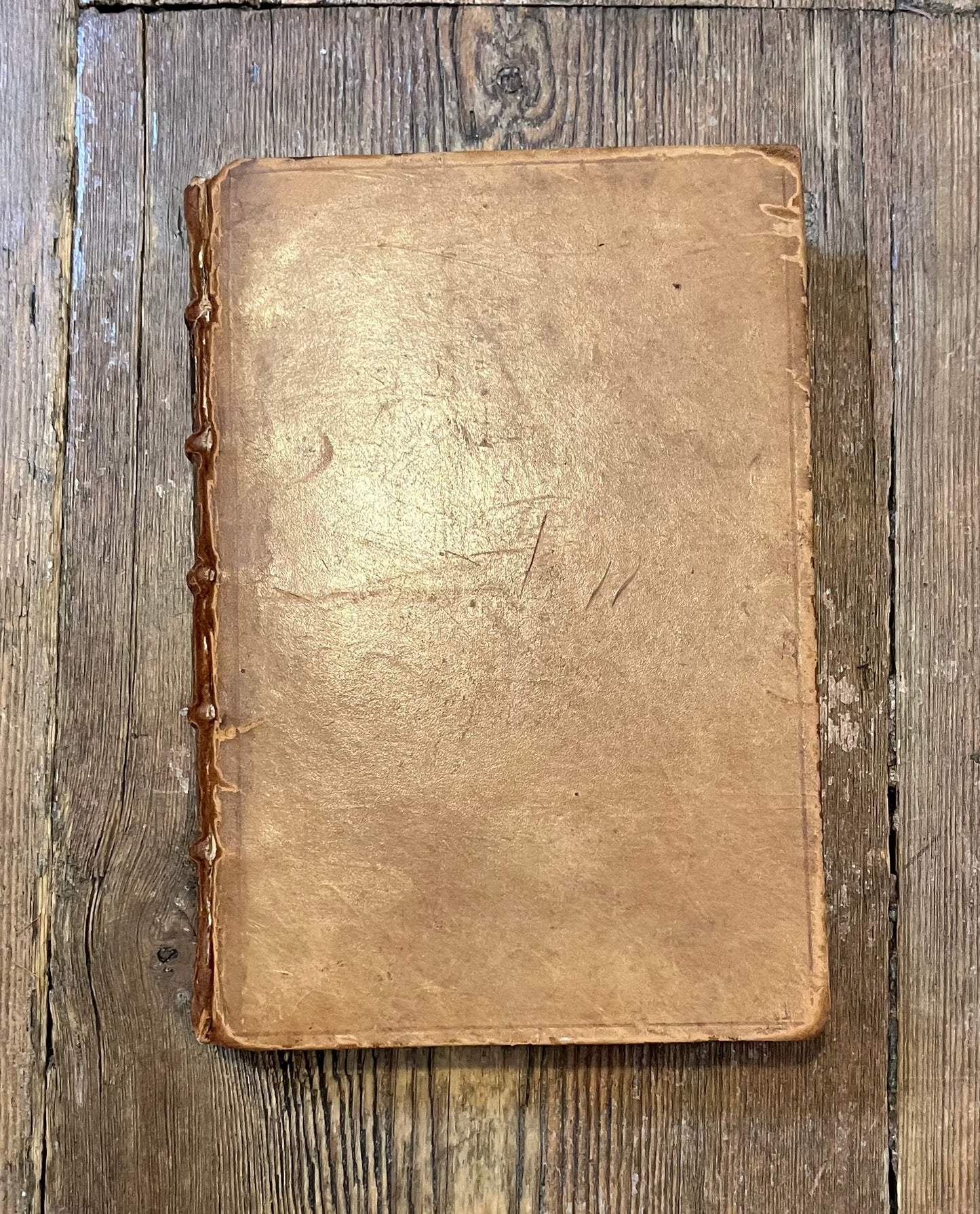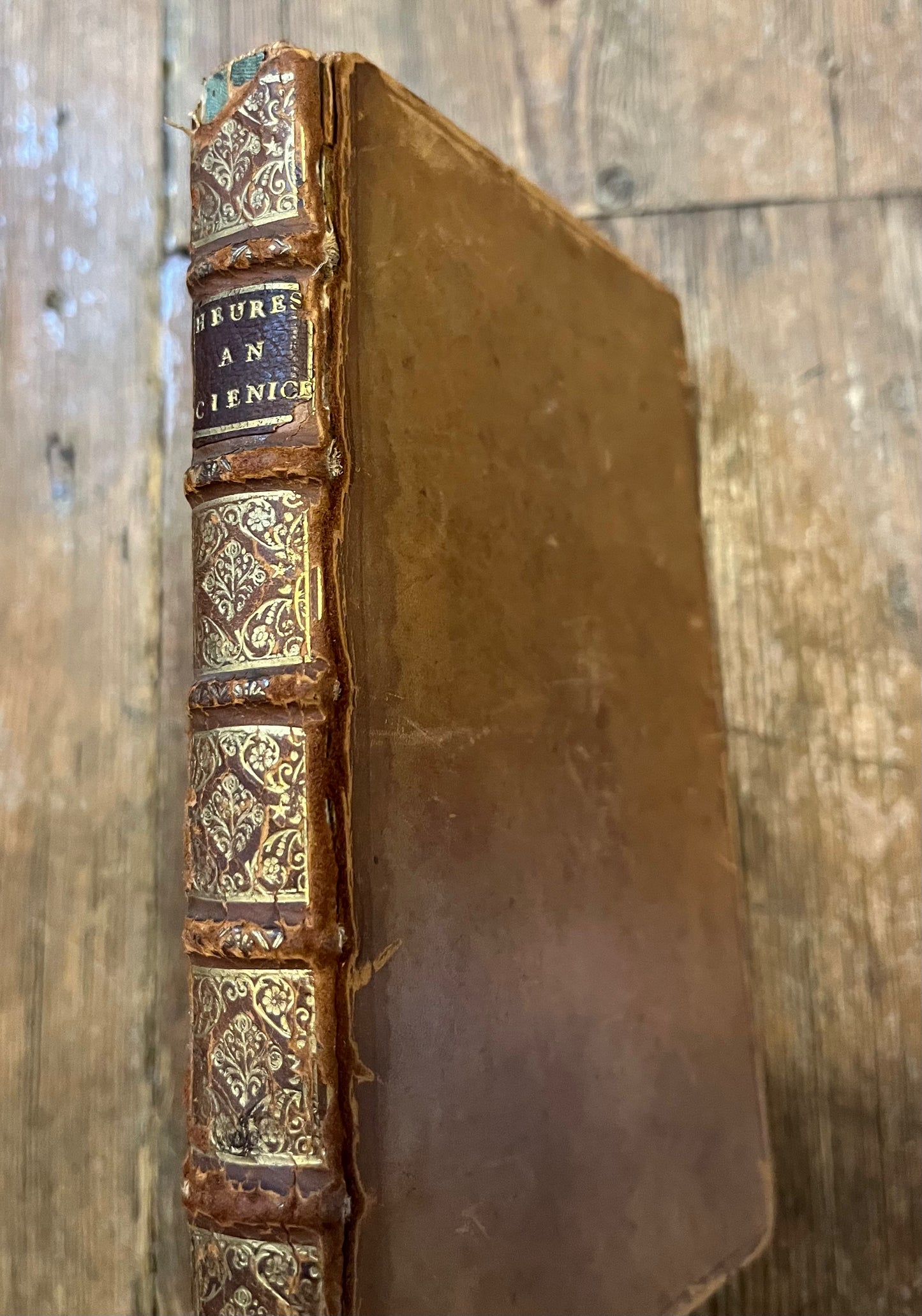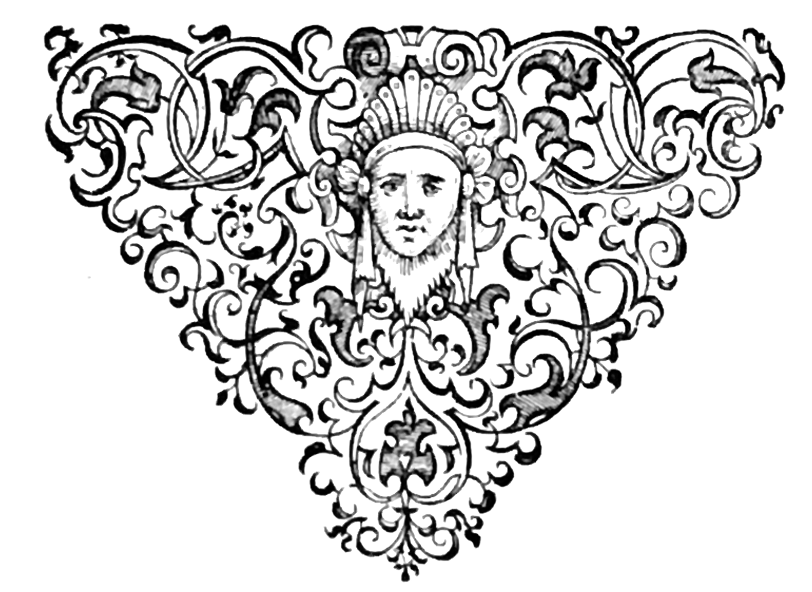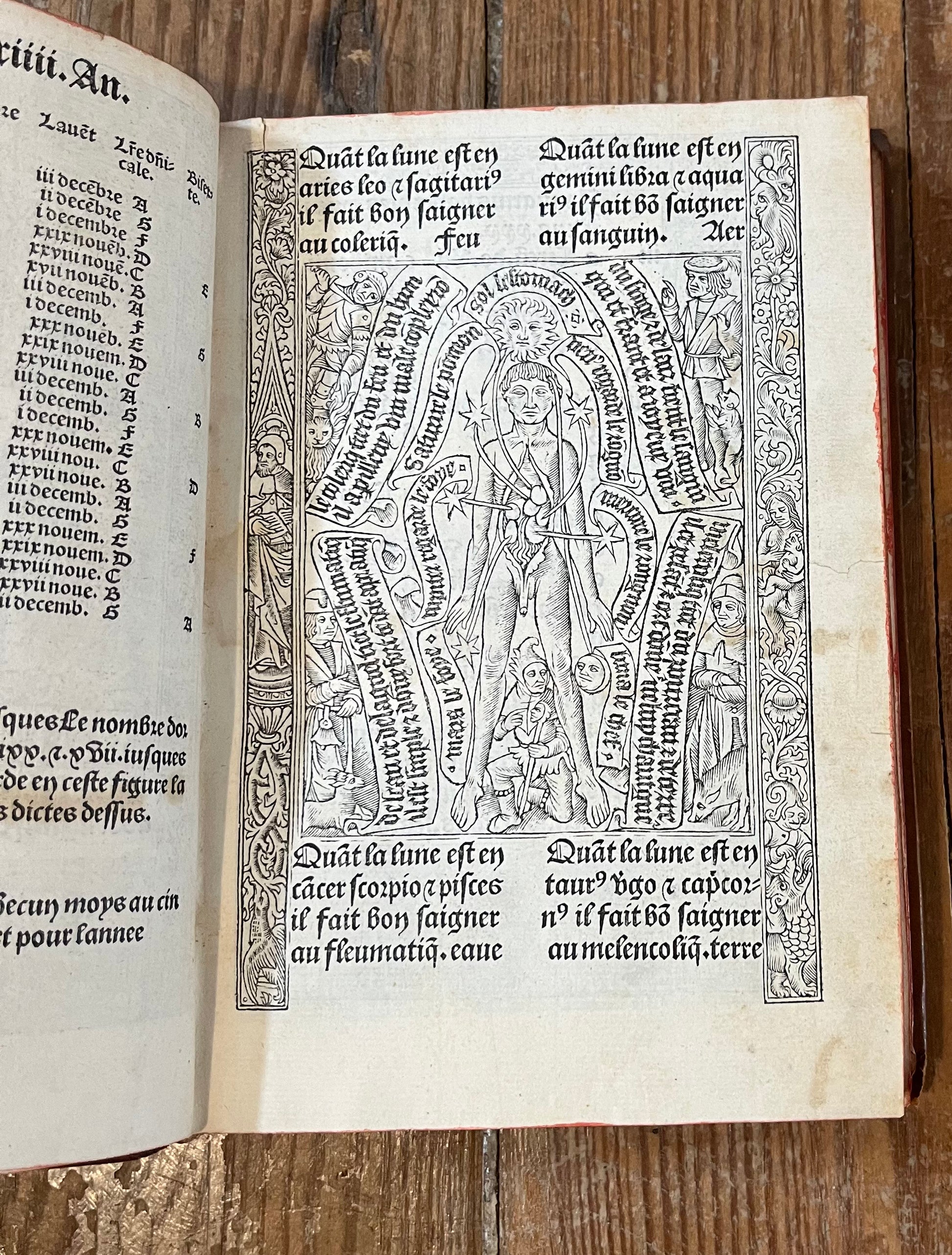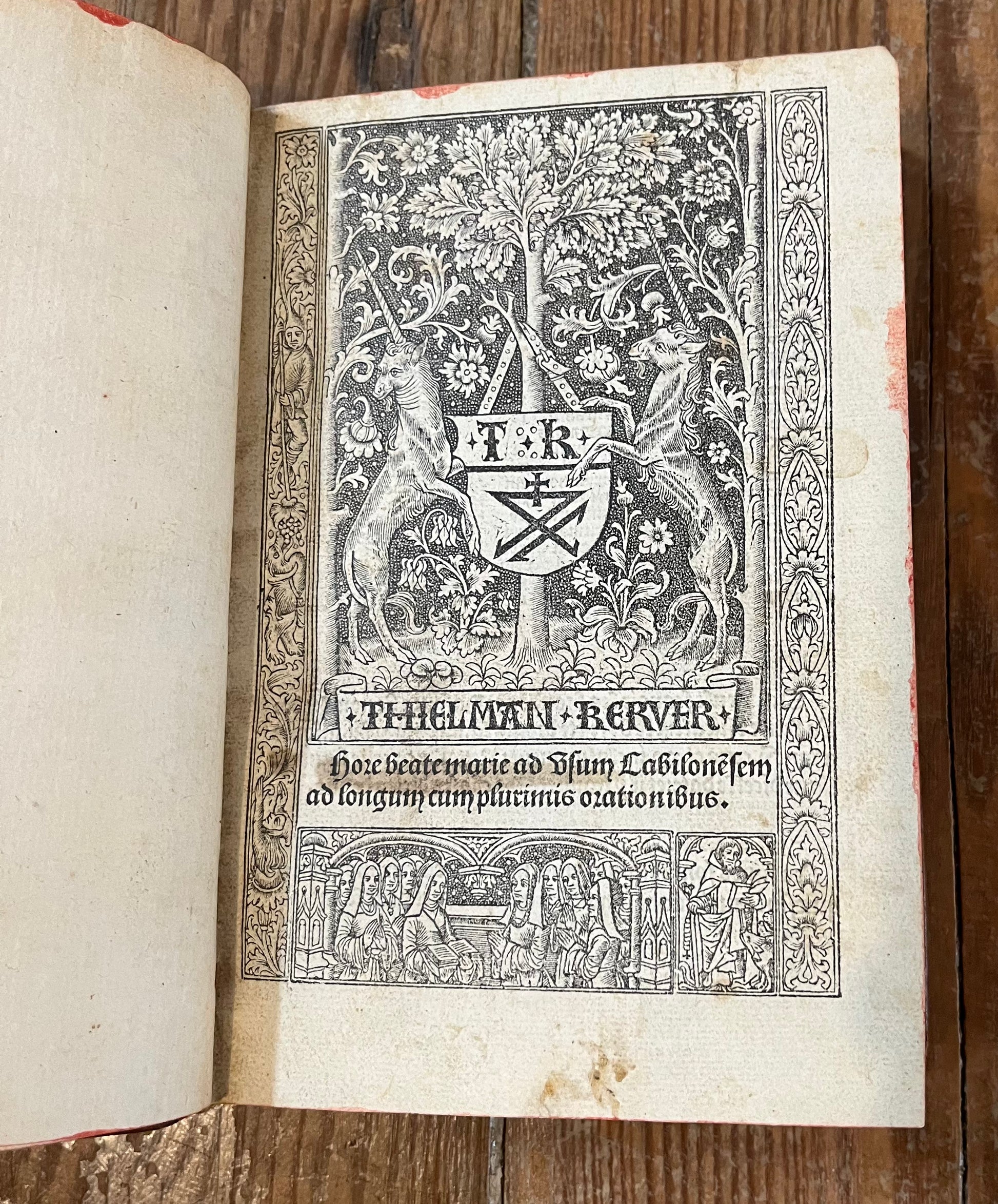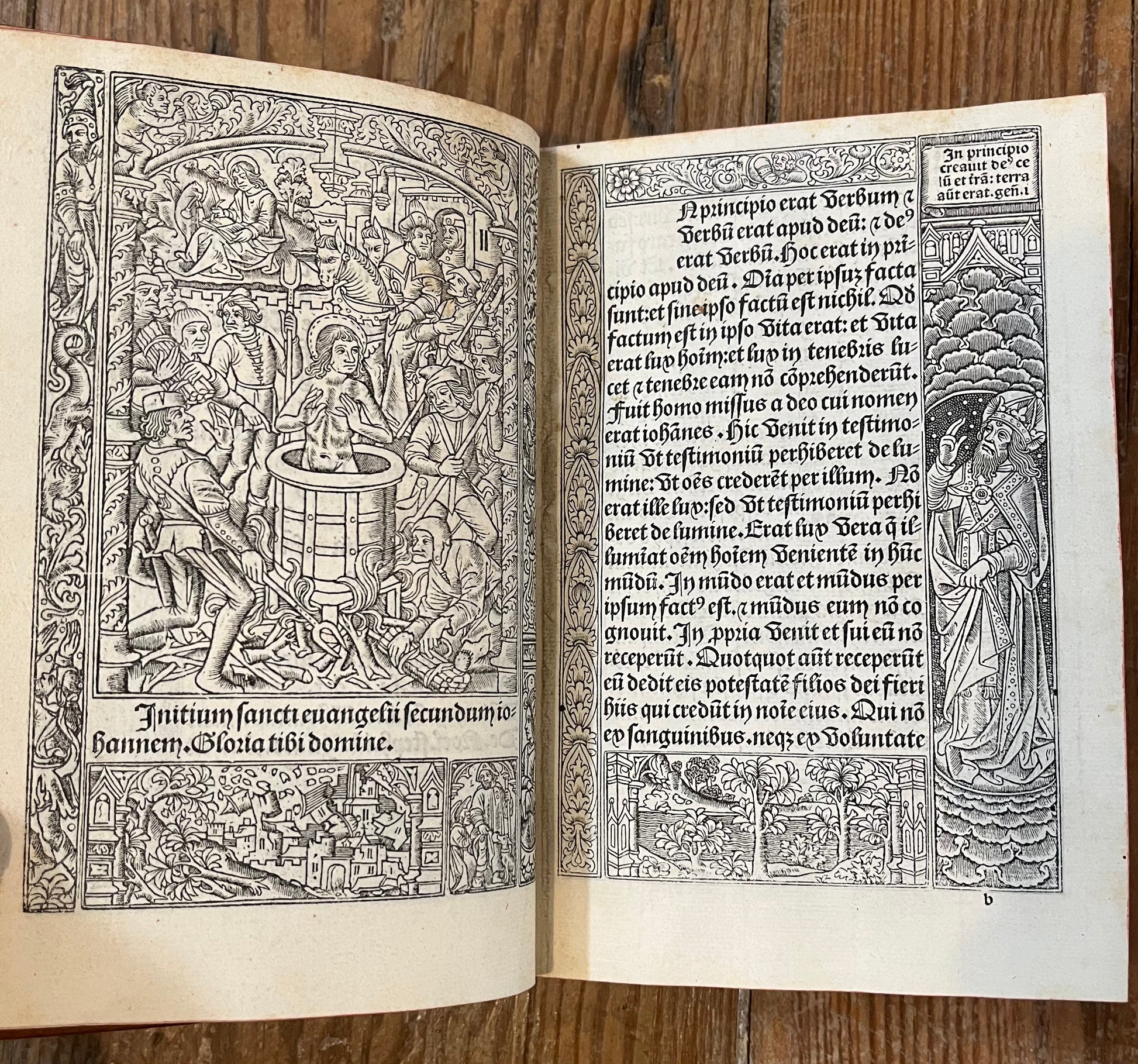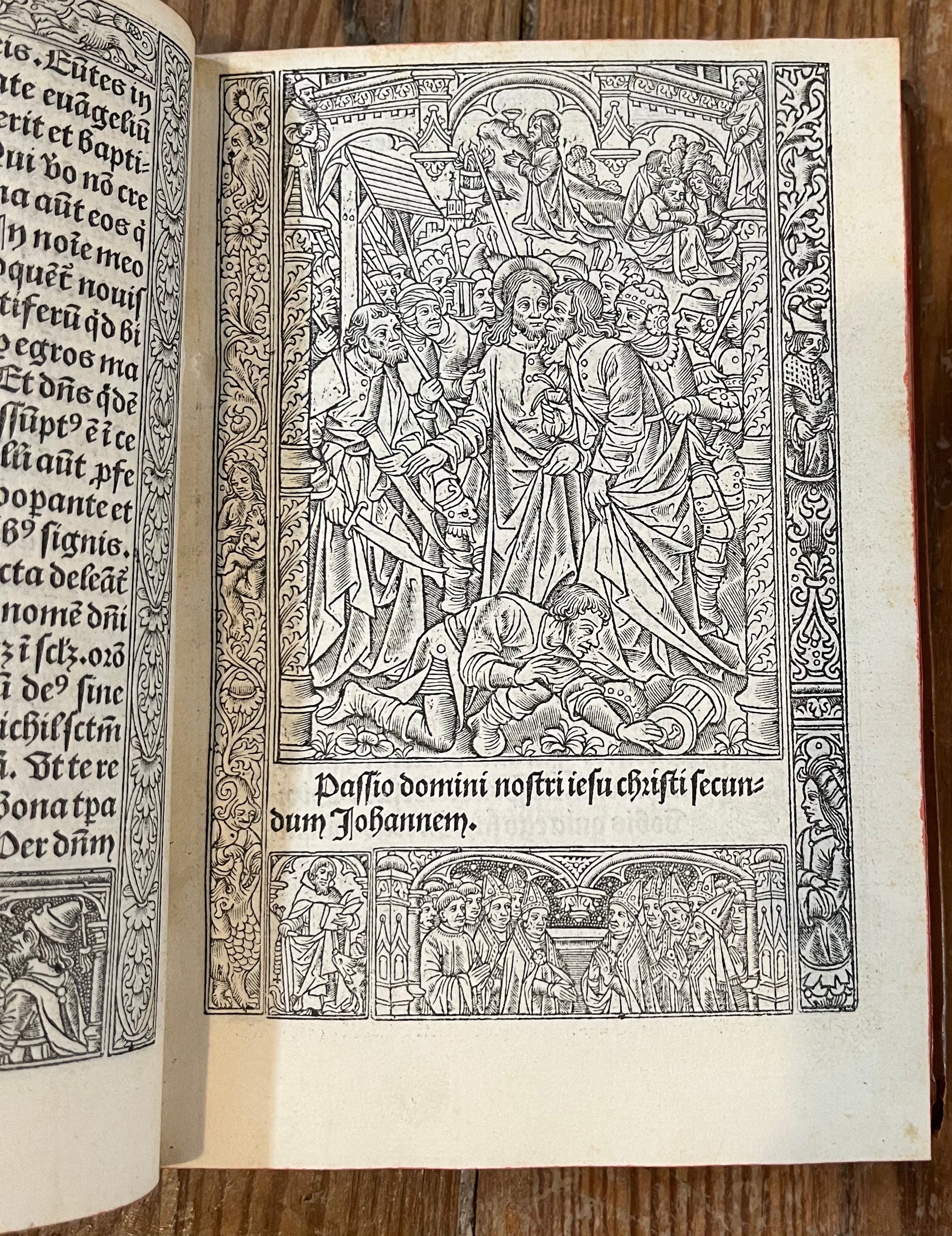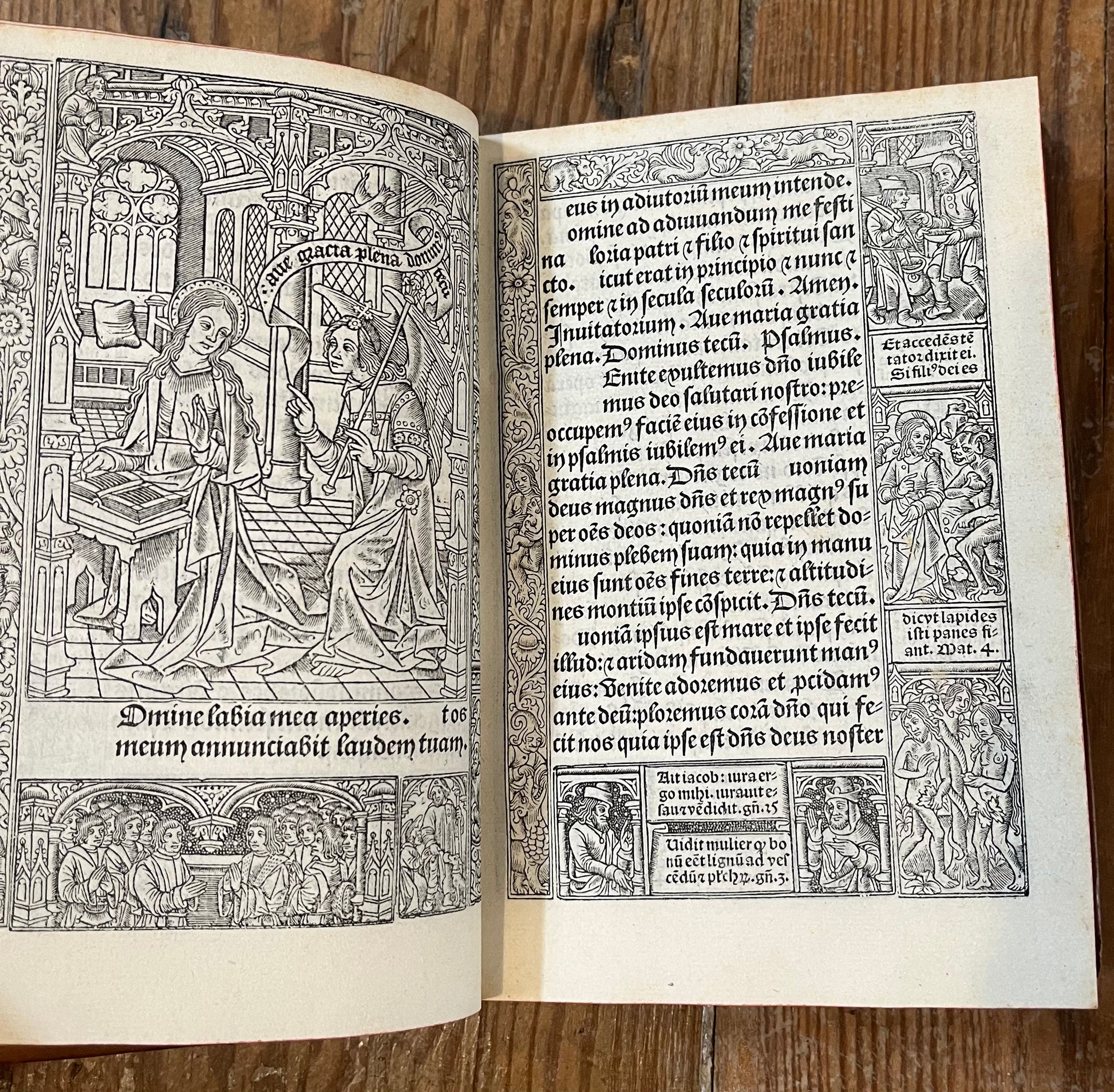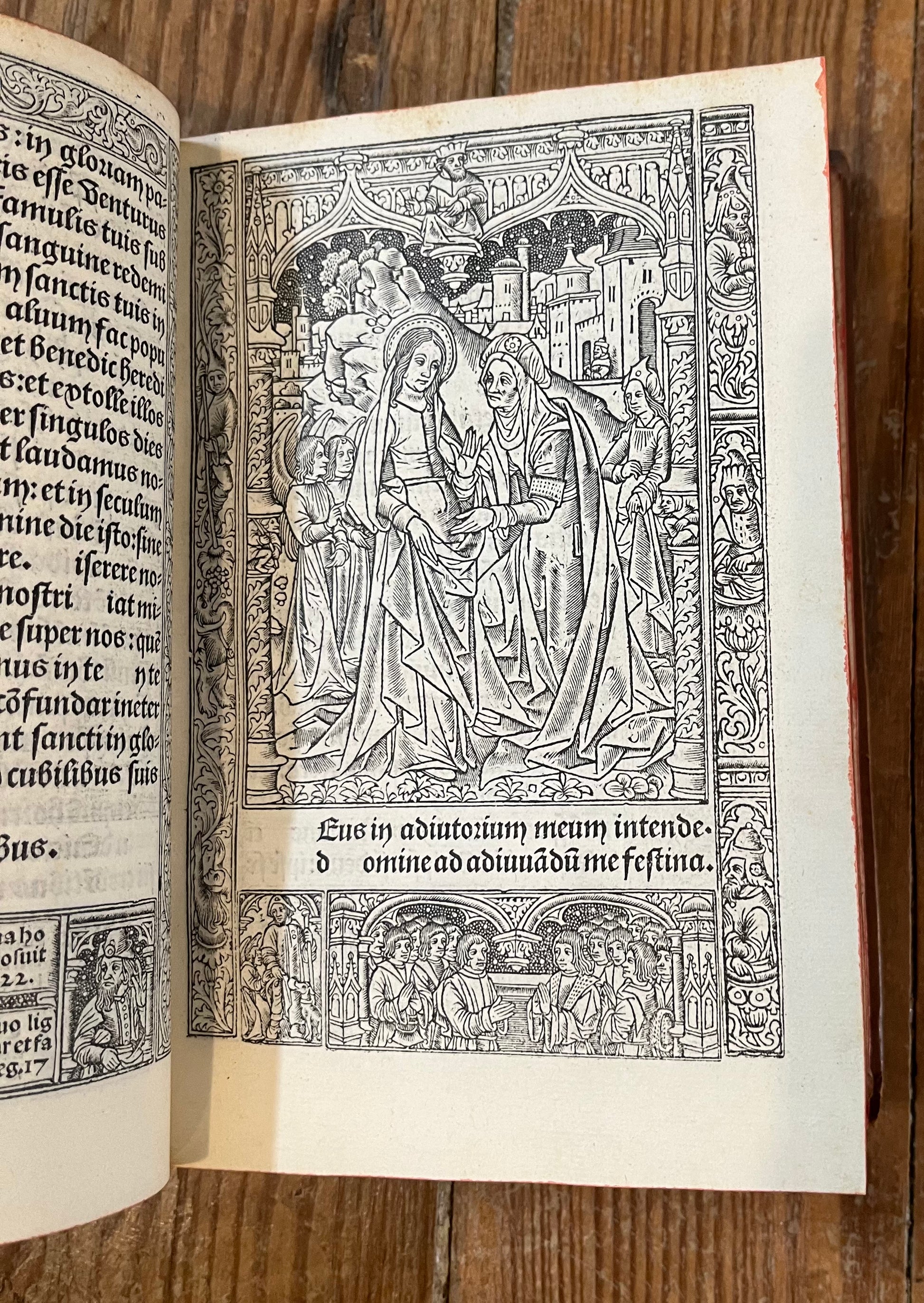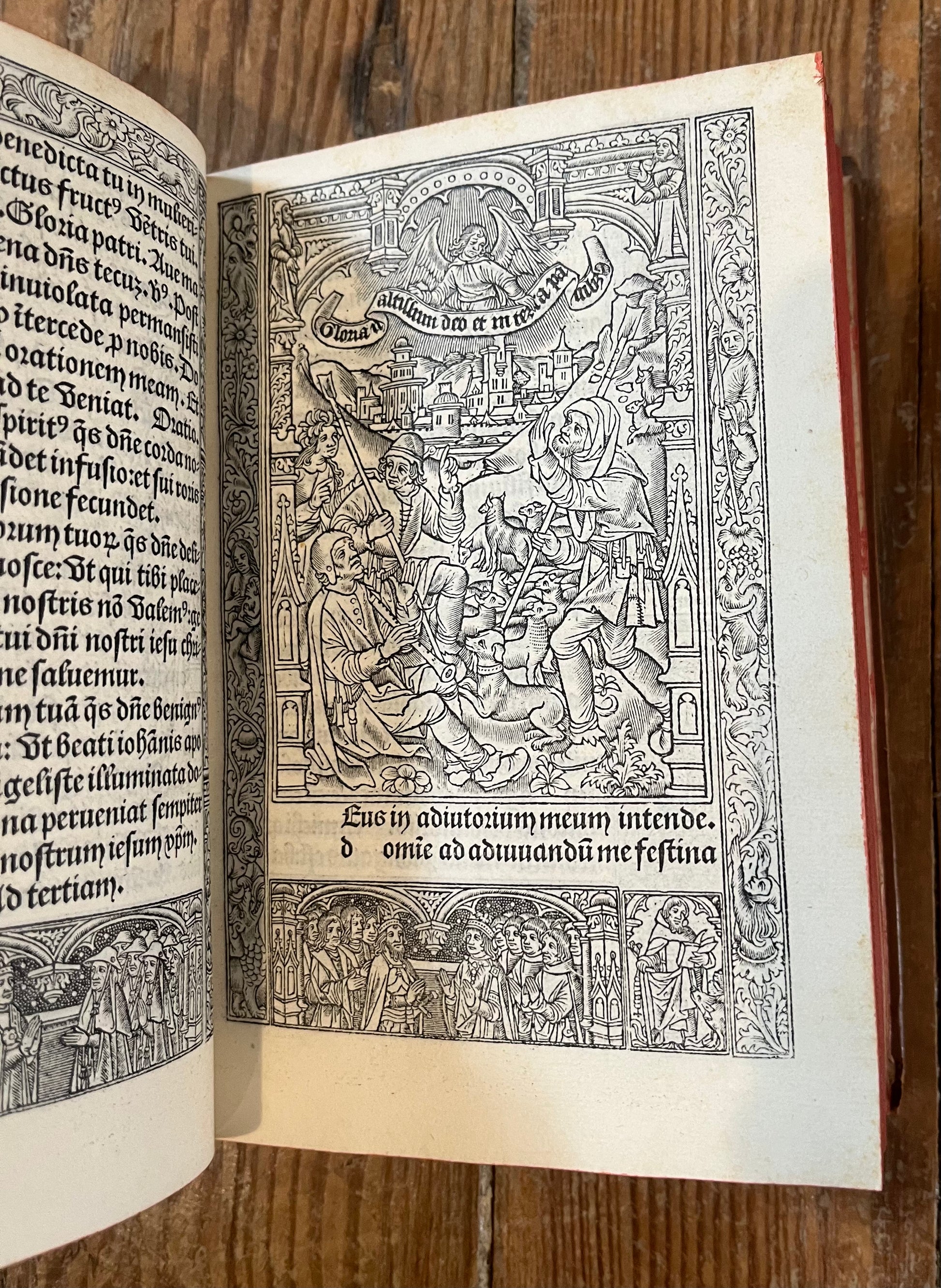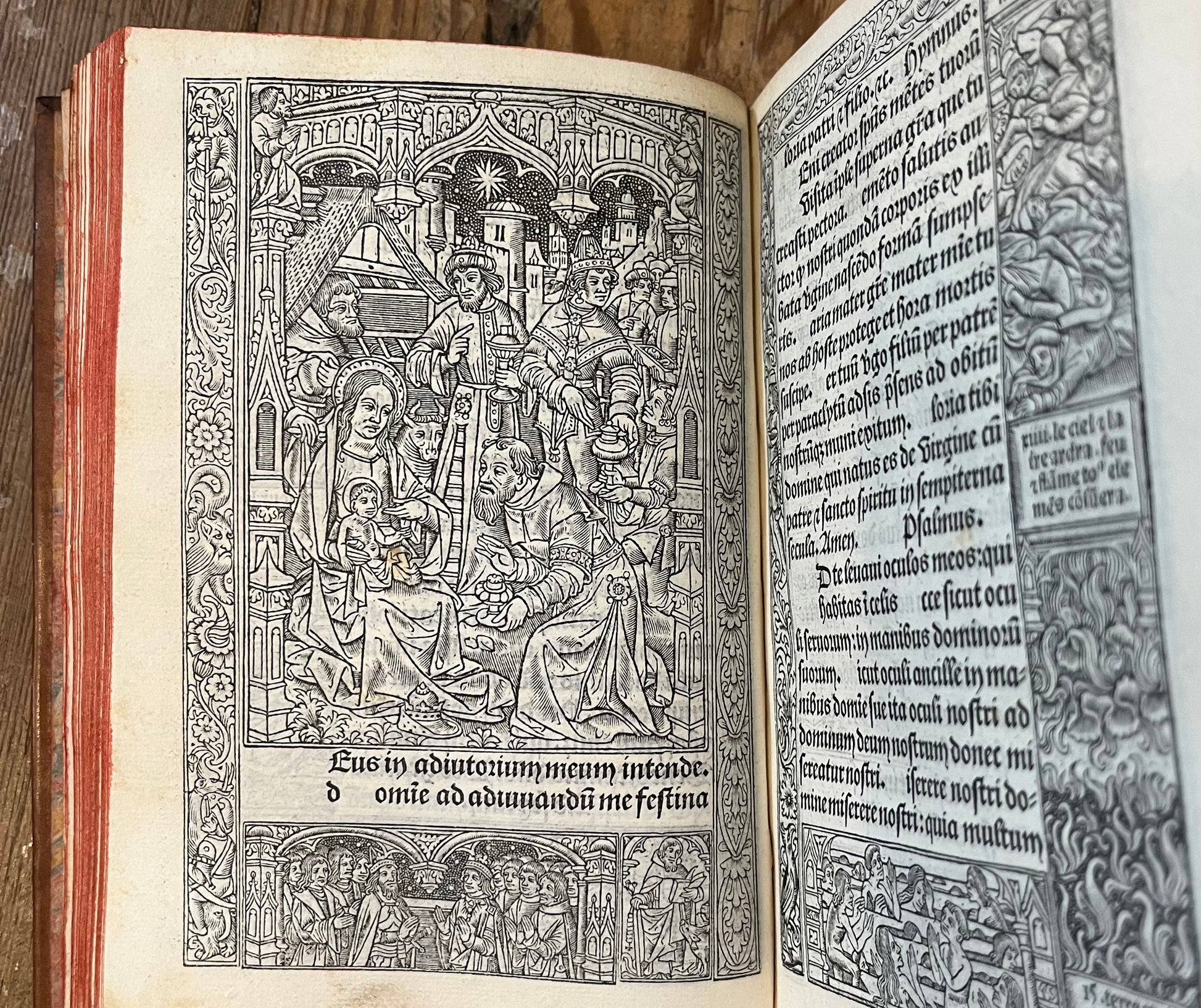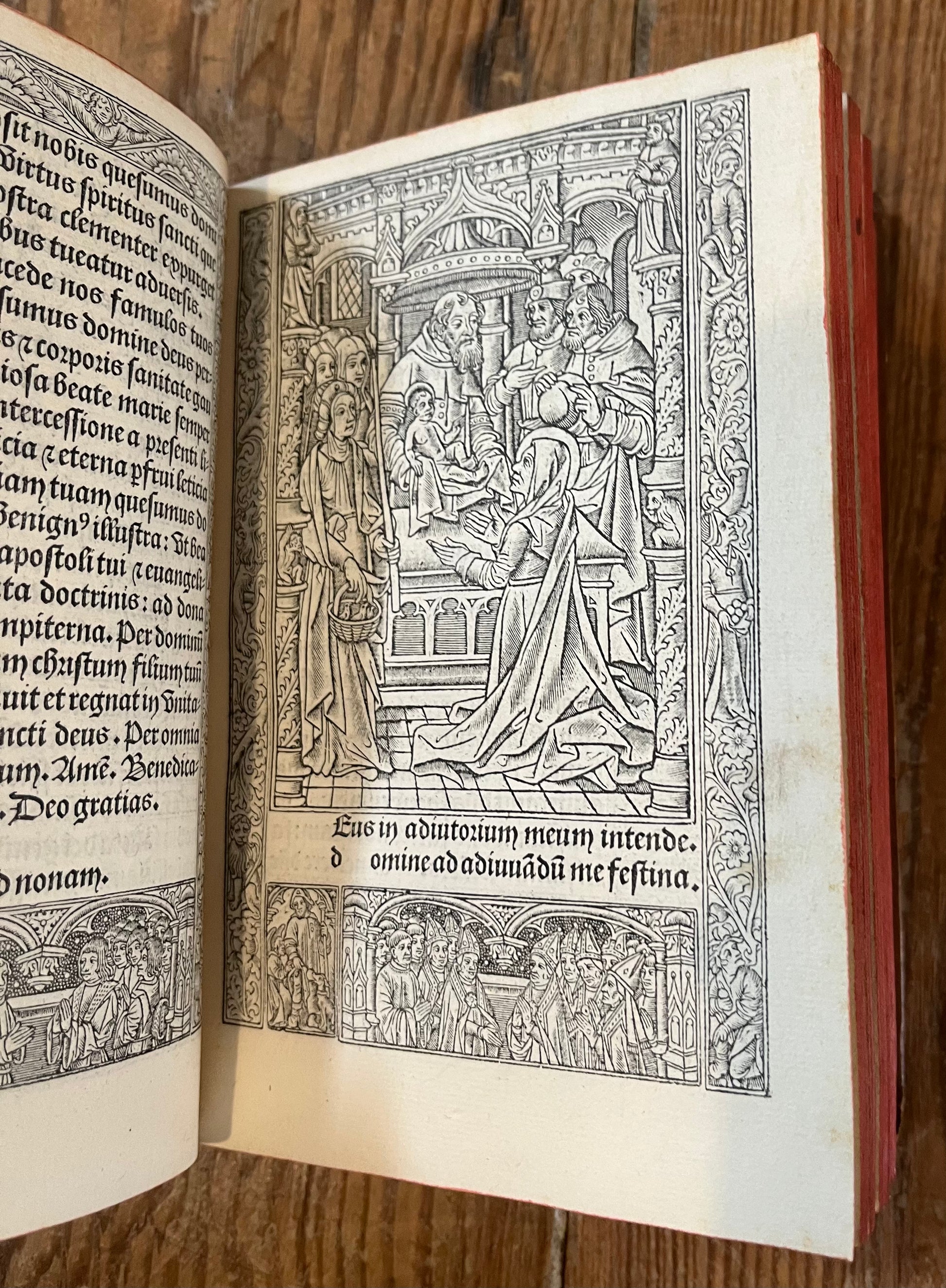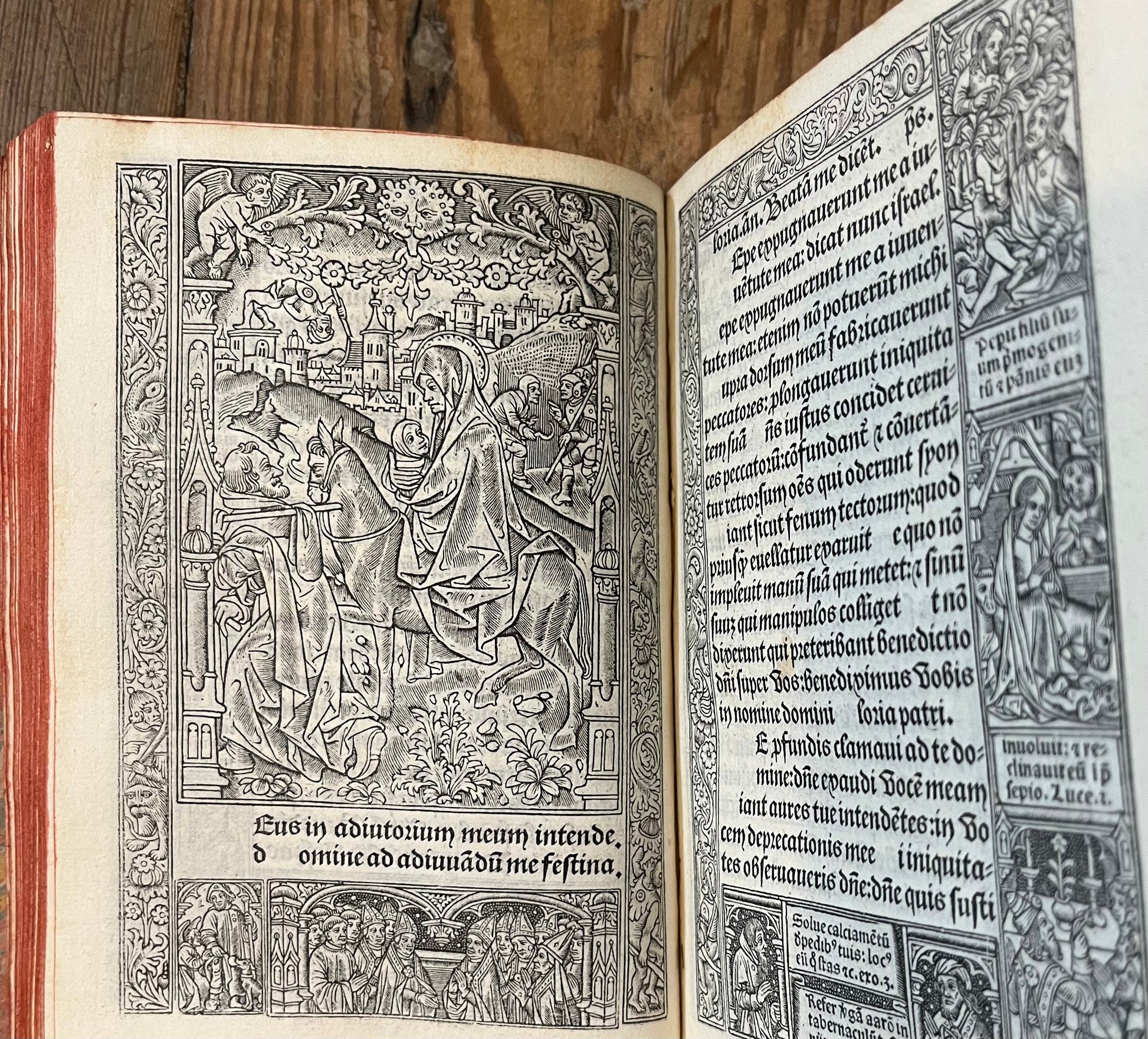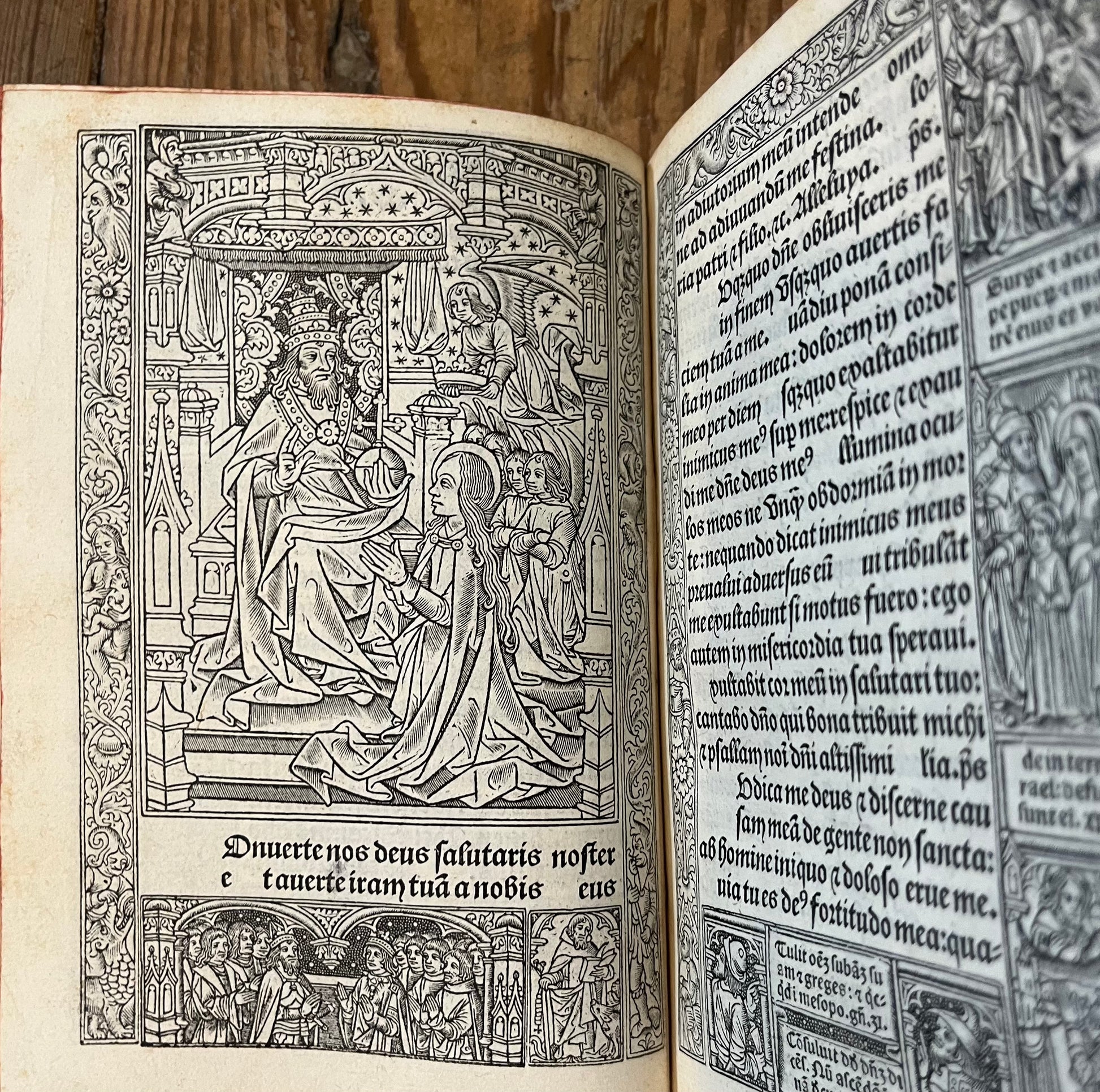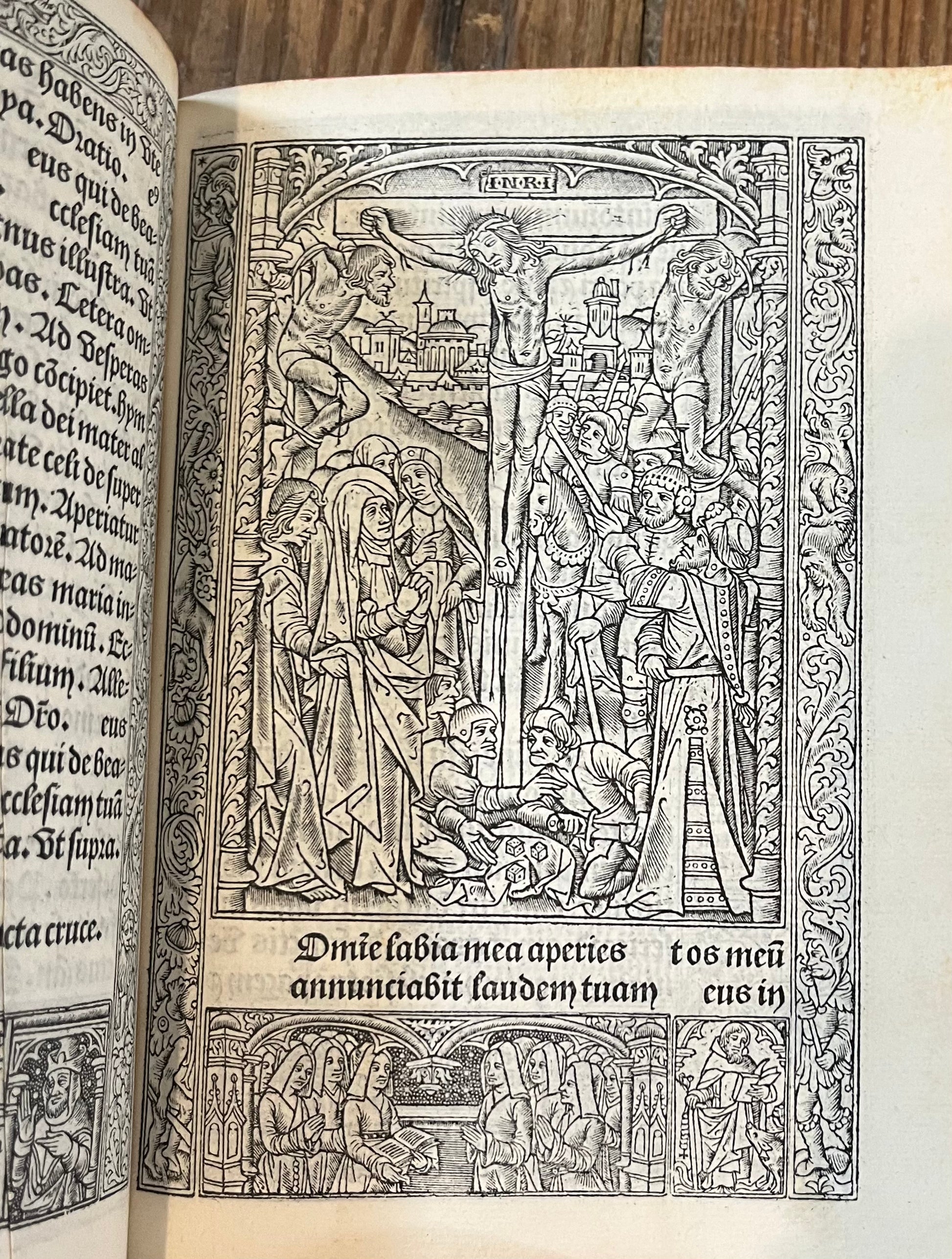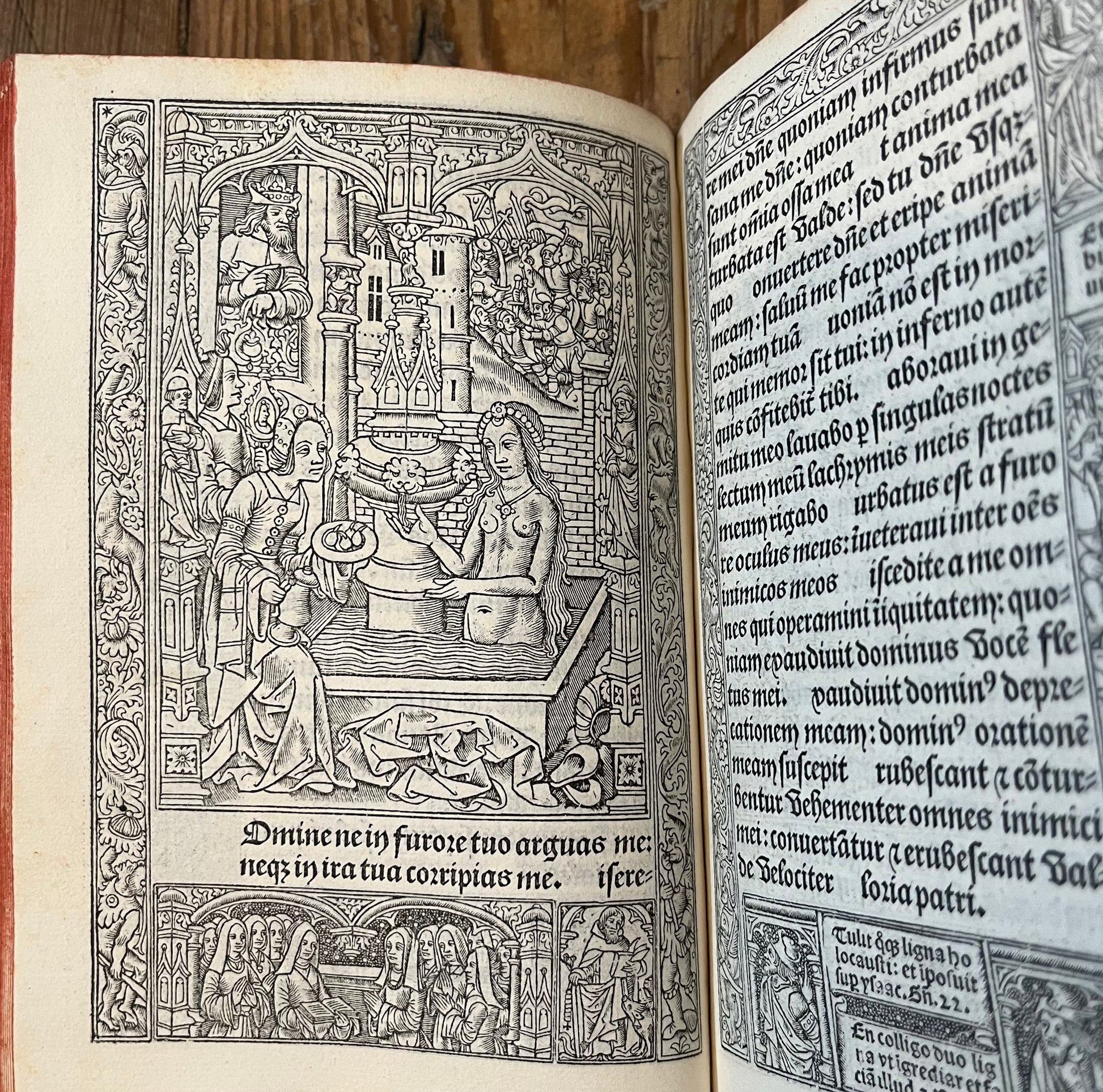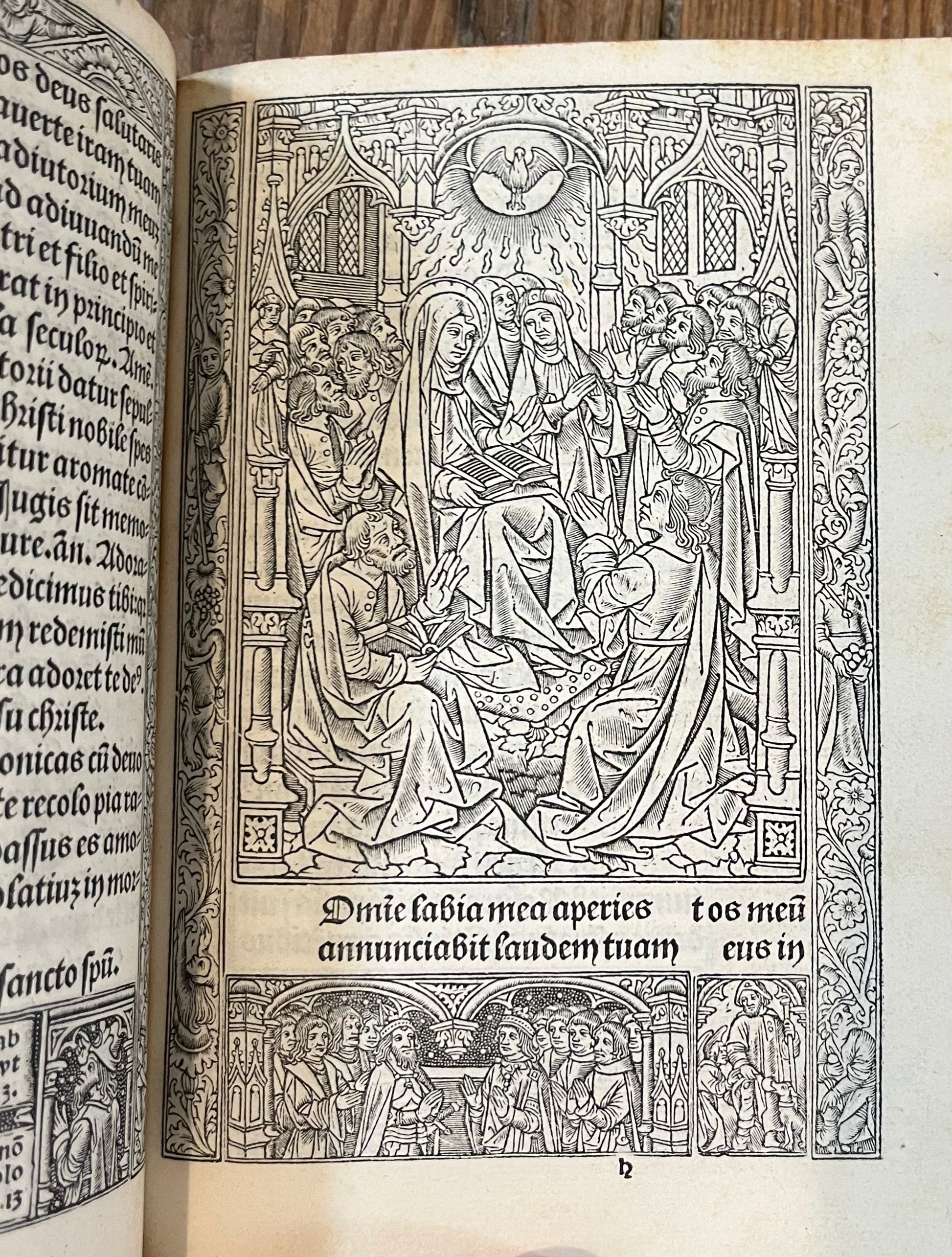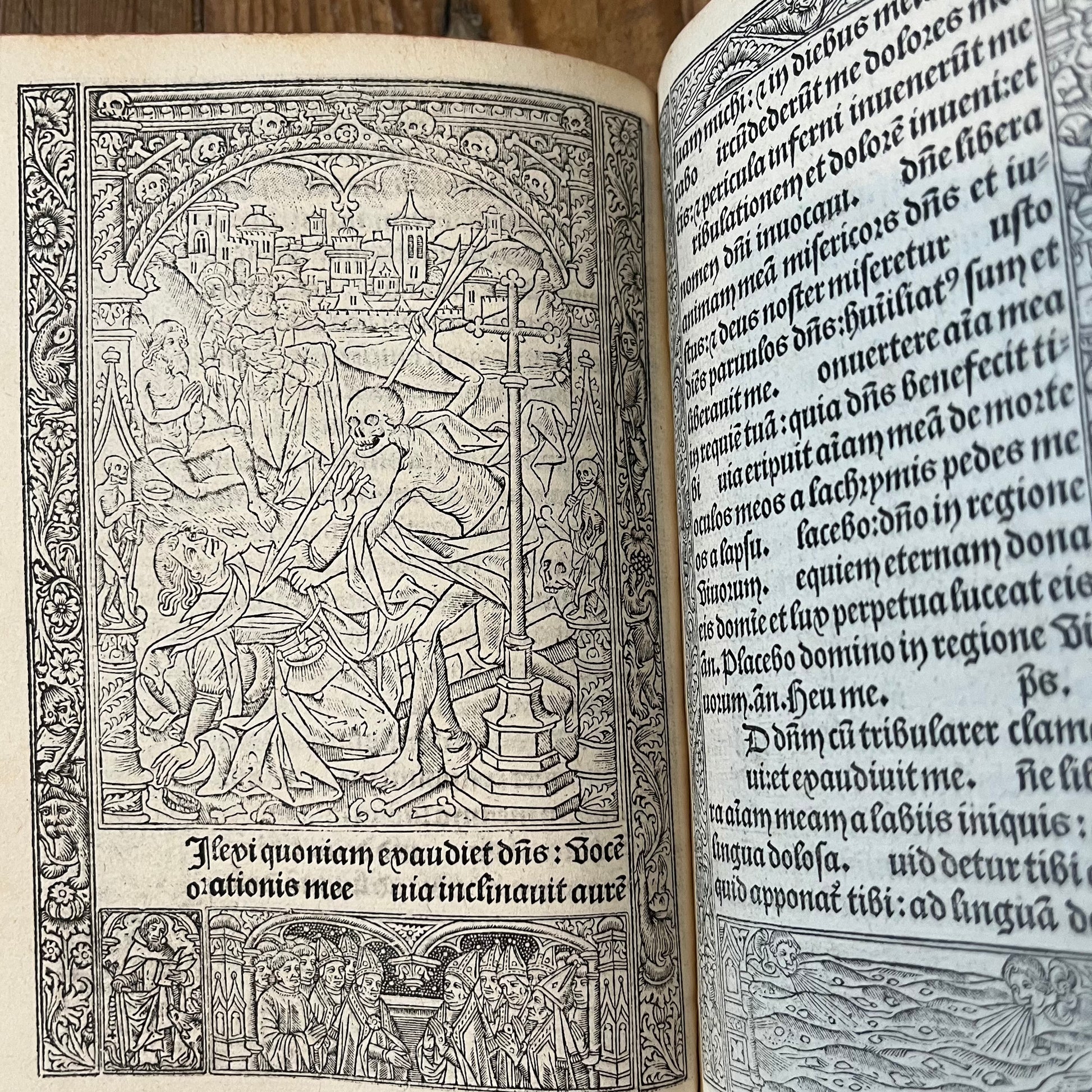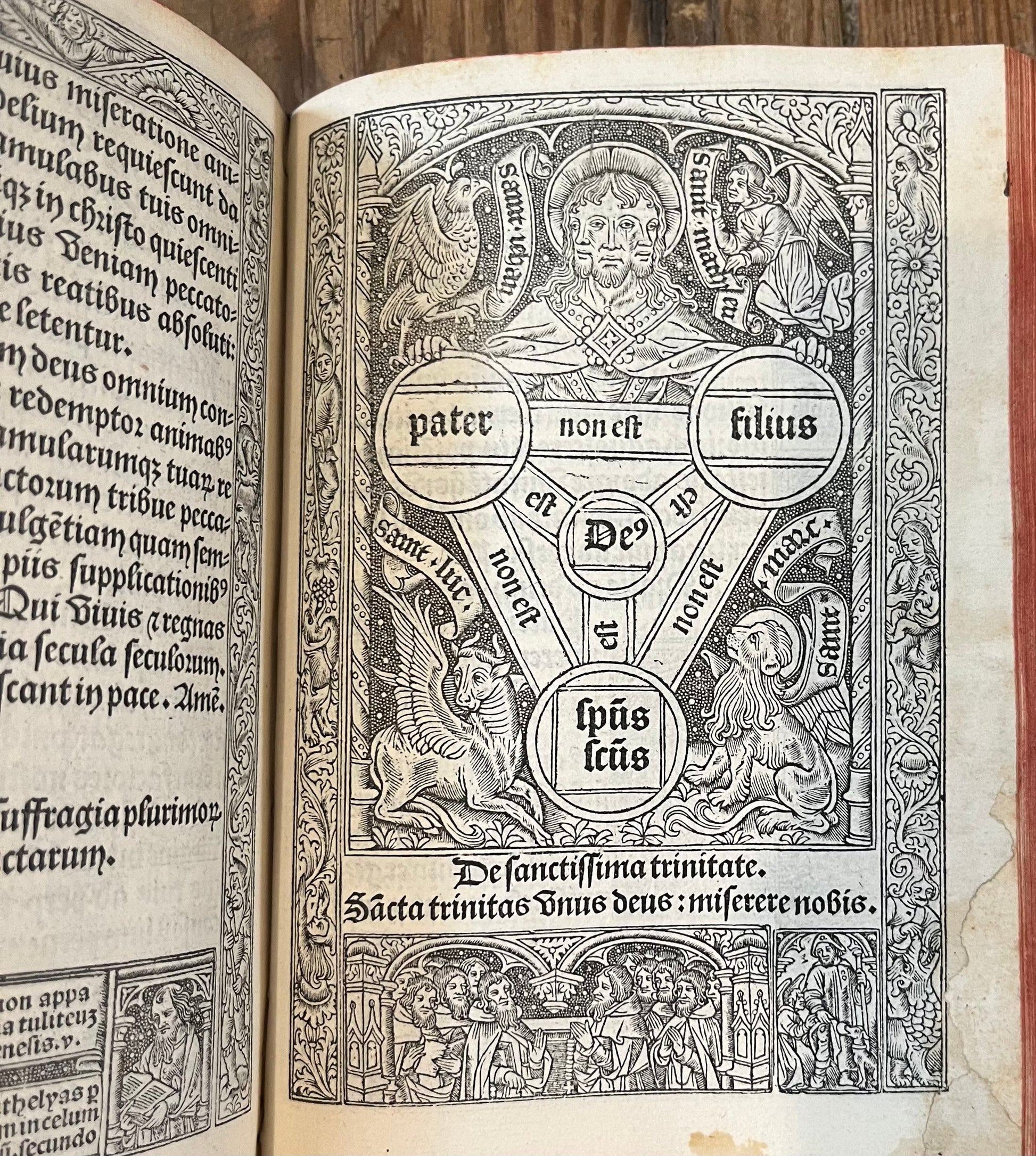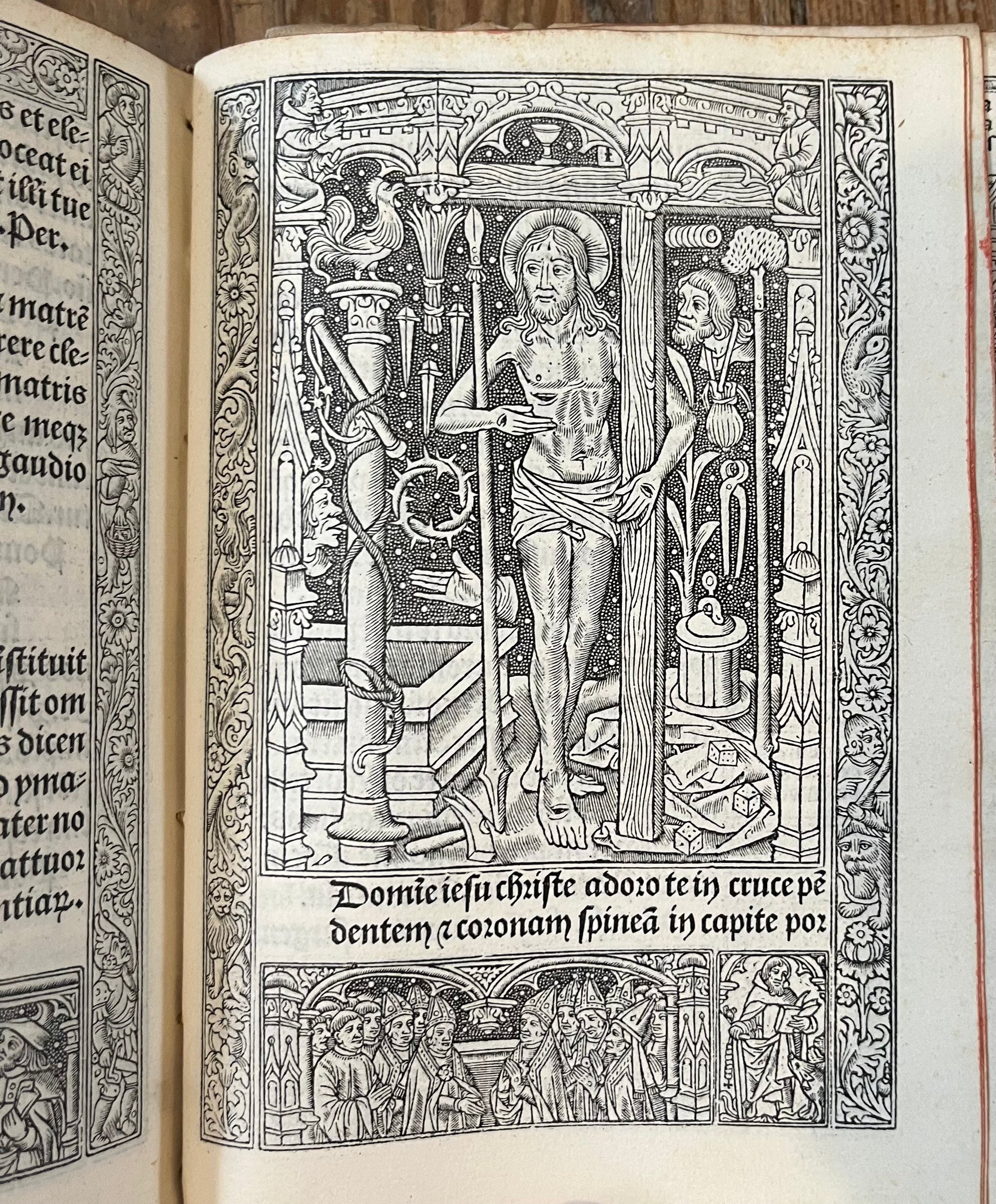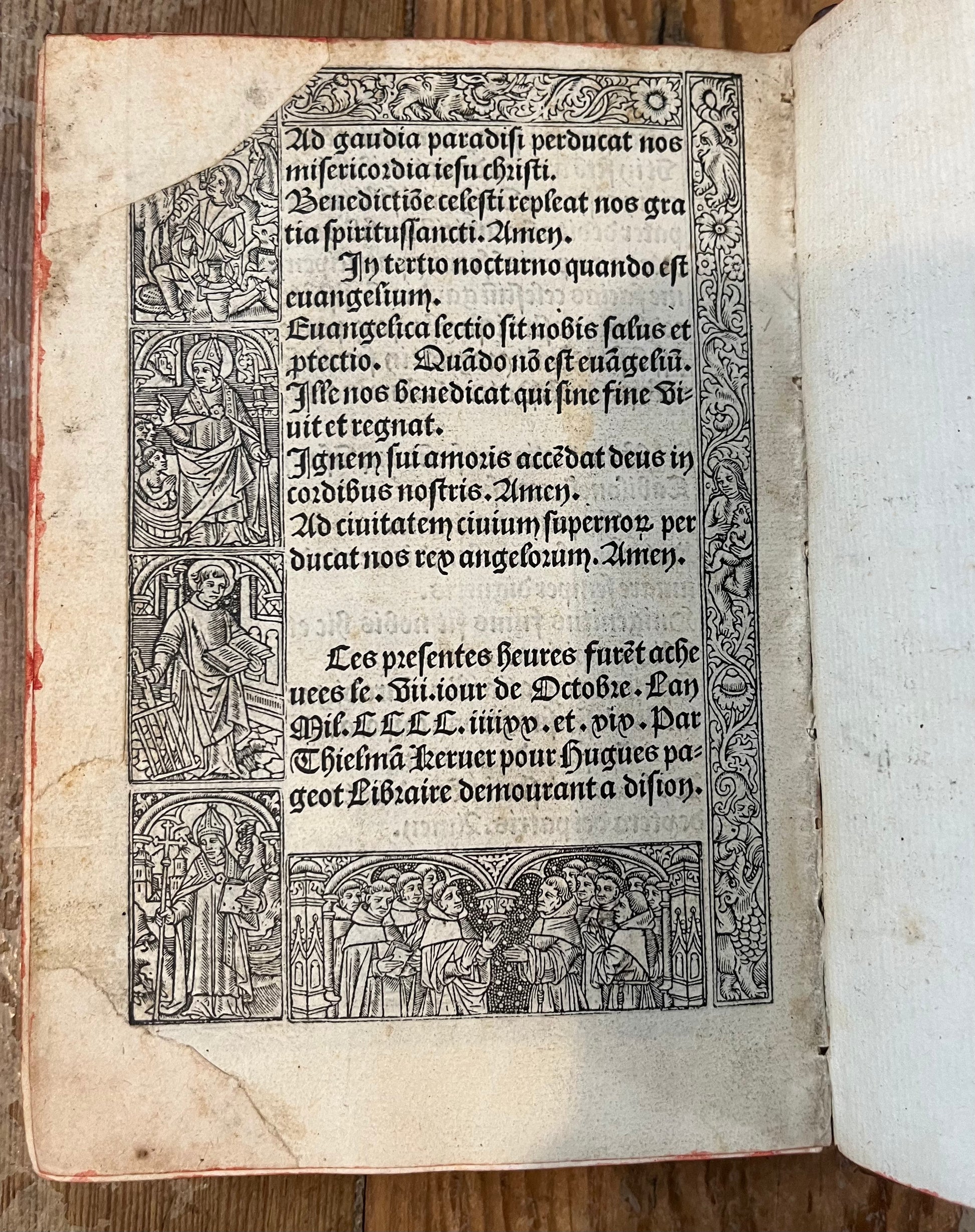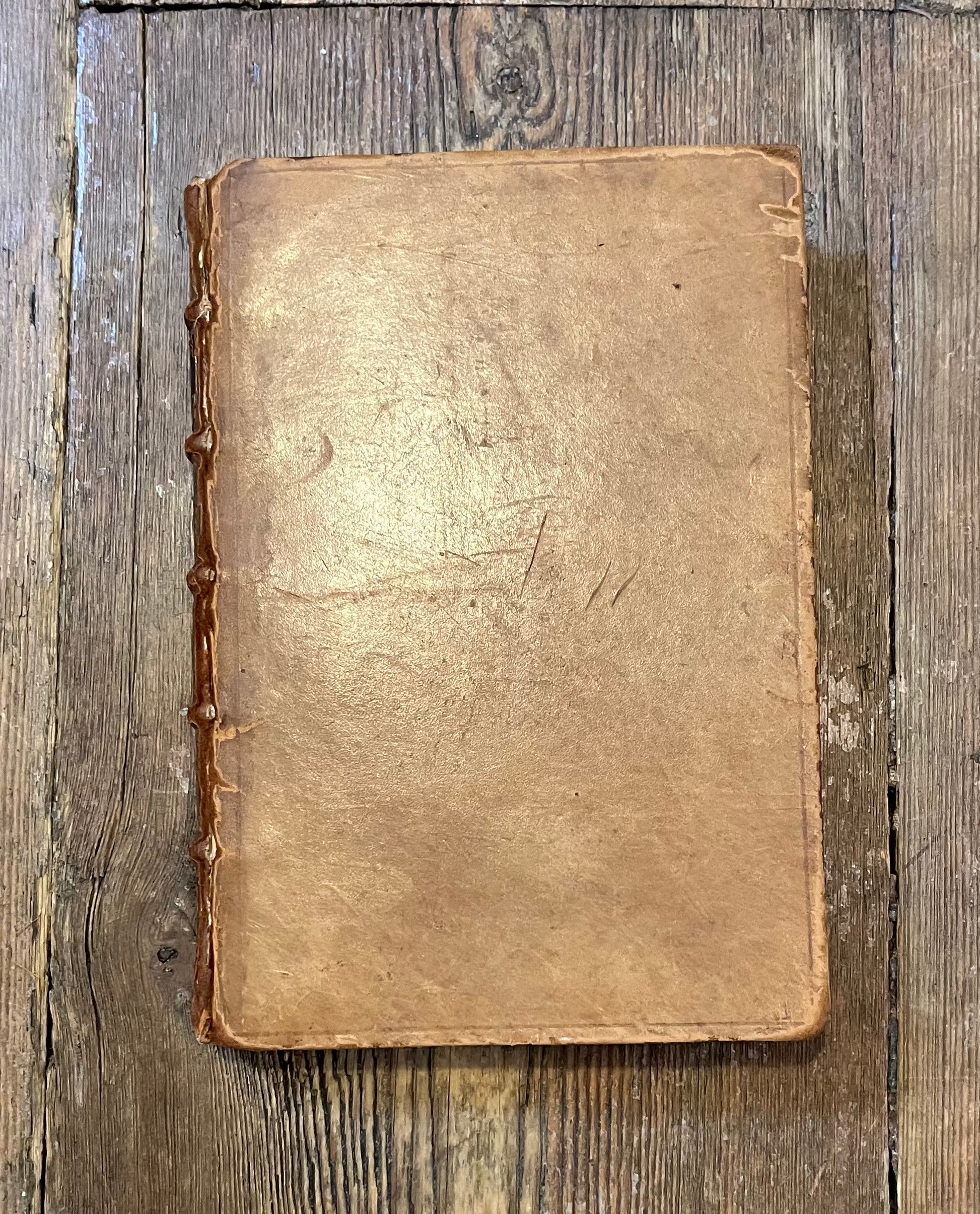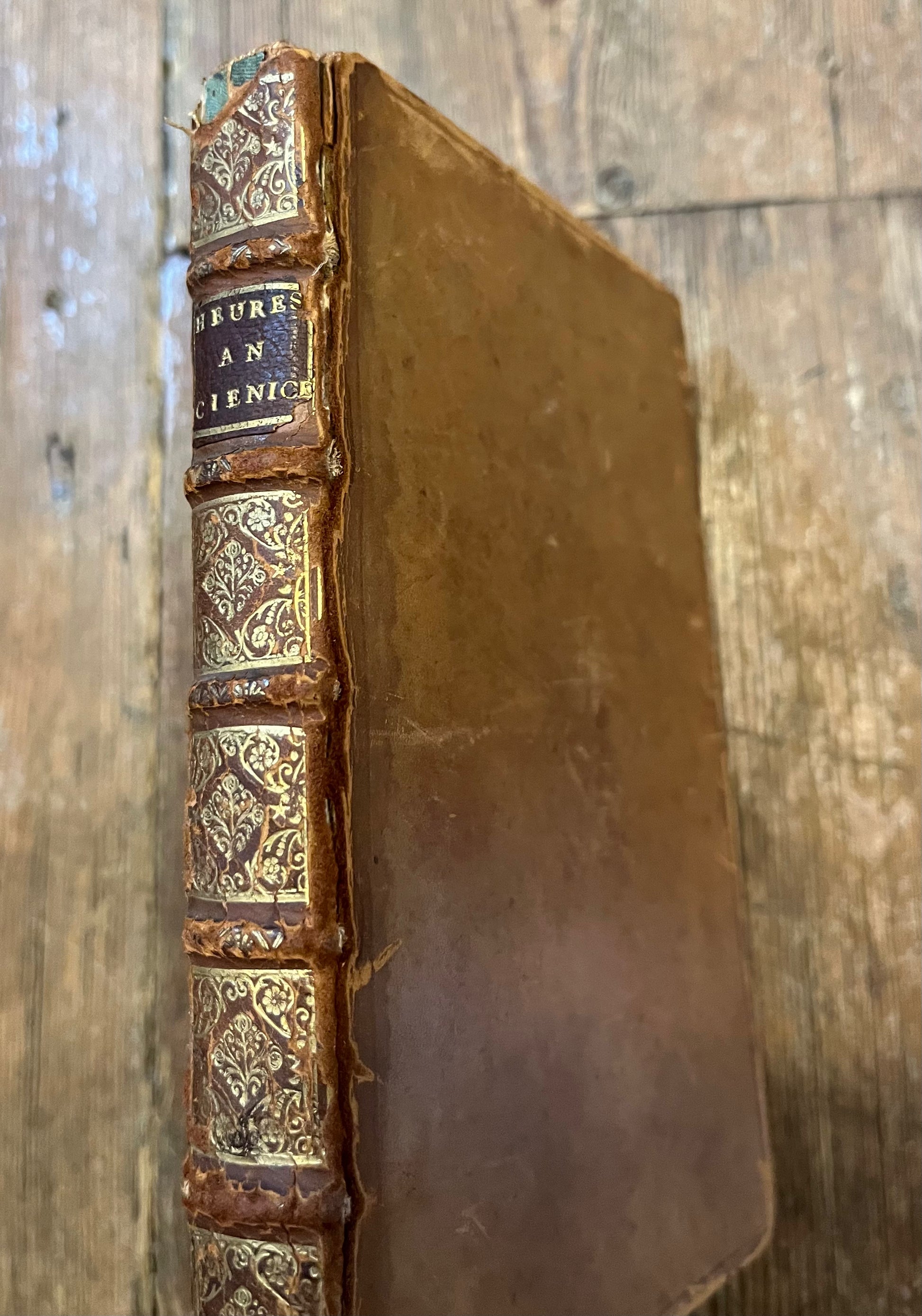De Bry Rare Books
Incunable - 1499 Book of Hours - Hore beate Marie ad usum Cabilonensem - Thielman Kerver
Incunable - 1499 Book of Hours - Hore beate Marie ad usum Cabilonensem - Thielman Kerver
Couldn't load pickup availability
Incunable - 1499 - Complete Book-of-Hours for the use of Chalon-sur-Saône by Thielman Kerver
"Hore beate Marie ad usum Cabilonensem"
-Printed in Paris at the Sign of the Unicorn by Thielman Kerver for Hugues Pageot of Dijon on 7th October 1499
-Almanac for 1497-1520
-124 pages (of 124 - Complete): a-p8 q4 - printed on paper.
-18th Century French full calf binding (Conserved but not rebacked) with modern custom made box. Marbled end papers and red edges to pages.
-Engraved title page and 17 large engravings in text after the Master of the Apocalypse Rose
-Generally crisp and clean interiorly in very good condition. Very good impressions apart from one engraving with a fainter impression. Small loss (repaired with losses) at upper corner of last 2 pages (see photos) Some minor staining to the border of a few leaves. Repaired small tears to a few leaves.
Books of hours were personal prayer books used for daily contemplation and prayer. They were hugely popular with the rich and upper middle classes from the 15th to the beginning of the 16th century. Each Book of hours could be personalised, but most contained prayers for the hours of the day, as well as prayers for saint days and for the dead. They were usually decorated with images to help prayer, as well as border decorations which could often have non- religious themes.
Initially hand written, at the end of the 15th century Paris became a specialist centre in producing printed books of hours. These were expensive items made to a high standard with intricate engravings and border decorations, and display a mastering of the art of printing.
The Book includes the celebrated “zodiac man”, illustrating the link between spirituality and religion at the time. This astrological man stands with his legs and arms spread. His organs are visible and each is attributed to a planet according to Mediaeval doctors’ interpretation of astrological influence on the organs. Between his legs a jester stares at the moon, emblem of the brain, suggesting the precariousness of human intelligence and the influence of the moon (This is where the word lunatic originates).
At the four corners are figures representing the main temperaments:
The choleric man is in full armour with a lion at his side and flames surrounding him: “The choleric has fire and luri, he has perilous wine and a bad complexion”
The Sanguine man holds a falcon and has a monkey at his feet: “From the the monkey and the air comes the sanguine who is frank and pleasant and has joyful wine”
The phlegmatic holds his gloves and has a purse on his belt, while a sheep is beside him: “The water holds the phlegmatic who is simple, gentle and practical
The melancholic leans on a staff with a pig by his side: “The Melancholic is made of swine and earth, is heavy and orderly and gives little heat”
The four paragraphs around the image describe the Fire, Air, Water and Earth signs and explain that when the moon is in their star signs it is the right time to let their blood.
Provenance:
Armorial book-plate of English politician John Conyers (1717-75) of Copped Hall
-Aline Thorold (1869-1951) m. Ernest James Wythes (1868-1949 at Copped Hall, thereafter by descent to Aline Mary Margaret (Elwes) McDonnell (1923-2023)
USTC: 63559, ISTC ih00341500; GW 13102
7 copies only in USTC (France and Italy). Several copies incomplete.
